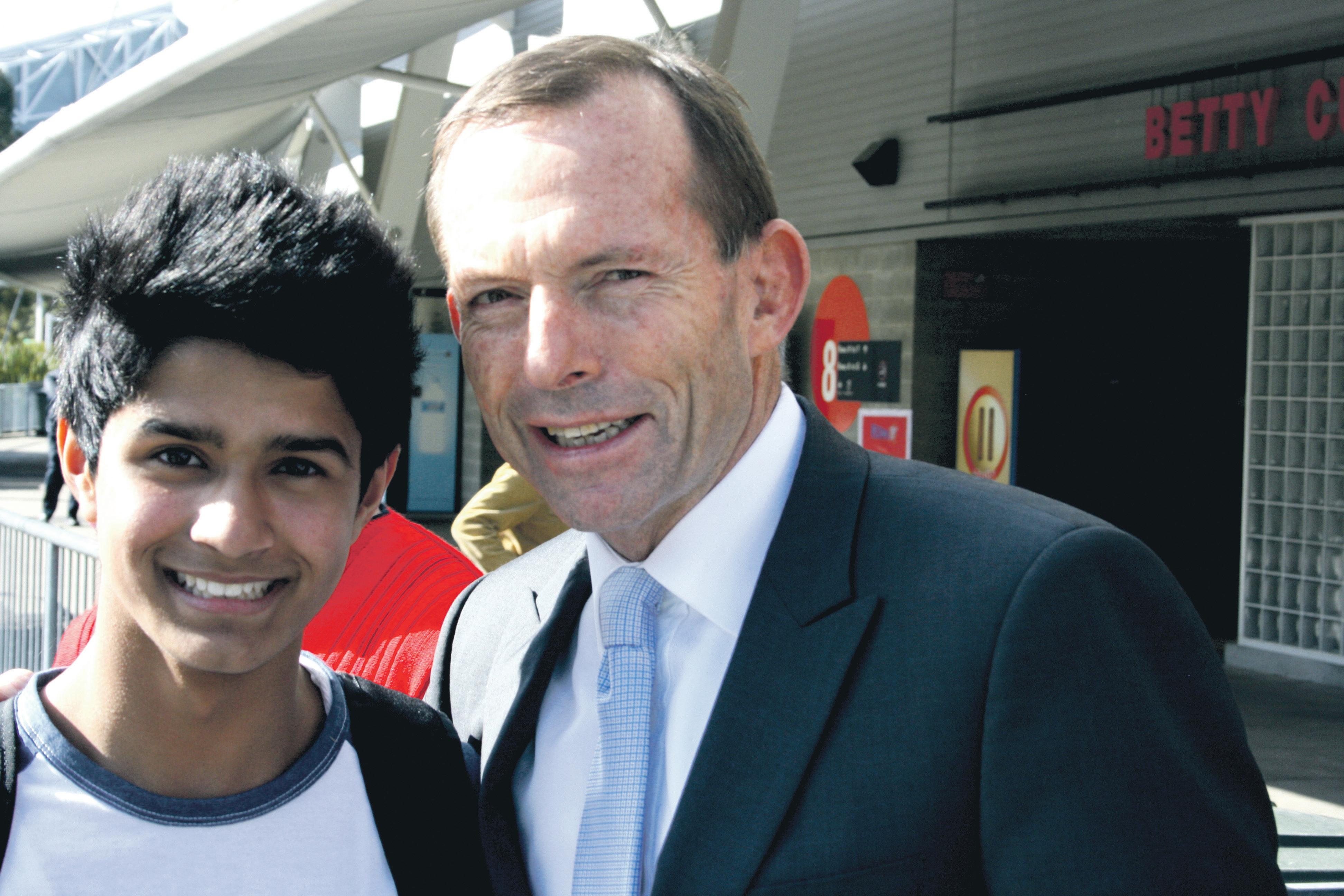



2013 PARLIAMENT OF NSW MULTICULTURAL MEDIA AWARDS Coverage of Community Affairs Abroad Online Innovation in News Blog or News Website Design 2013 NSW PREMIER’S MULTICULTURAL MEDIA AWARDS Best News Report Best Online Publication of the Year Best Image of the Year 2012 PARLIAMENT OF NSW MULTICULTURAL MEDIA AWARDS Multicultural Journalist of the Year Editorial / News Reporting Online Innovation in News Blog or News Website Design 2011 NSW PREMIER’S SUbCONTINENT COMMUNITy AWARDS Harmony Award Finalist in 7 of the 10 categories PM’s India plan An award-winning media group Indian Link Sydney • Melbourne • AdelAide • briSbAne • Perth • CAnberrA Sydney • Melbourne • AdelAide • briSbAne • Perth • CAnberrA FREE OCTOBER 2013 • melb@indianlink.com.au • www.indianlink.com.au MELBOURNE Ph: 03 9803 0200 • 1 8000 15 8 47 • 0468 389 272 MELBOURNE EditiON In an Indian Link exclusive, Prime Minister Tony Abbott discusses the uranium issue, 457 Visas, Hindi language learning and… chicken tikka

2 OCTOBER 2013 www.indianlink.com.au

OCTOBER 2013 3 INDIAN LINK

4 OCTOBER 2013 www.indianlink.com.au
Indian Link is a monthly newspaper published in English. No material, including advertisements designed by Indian Link, may be reproduced in part or in whole without the written consent of the editor. Opinions carried in Indian Link are those of the writers and not necessarily endorsed by Indian Link. All correspondence should be addressed to
Email: info@indianlink.com.au

www.indianlink.com.au
Importance of the Indian vote at the 2013 federal elections
Indian Link has got it right yet again.
In a poll we conducted prior to the 2007 elections, the trend was clearly towards the Australian Labor Party and after 13 years in government, the Liberal Party led by John Howard was defeated. And so Kevin Rudd made true the ‘Kevin 07’ prediction.
In 2010, our community-based poll called the election a draw, and right enough, Australia saw in a hung parliament.
And in the 2013 elections, our online poll indicated a margin of 7% in favour of the Coalition Liberal National Party.
As the final results have come through, we see them finally polling 53 to 47 against the ALP on a two-party preferred basis. The local Indian community has now got it right three times in a row!
While there can be many answers, it is worth acknowledging that the contemporary Indian is a highly political animal (passionate political debates are a common occurrence at the friendly
neighbourhood chaiwallah’s), and this could certainly be true of the Indian populations here in Australia. With democratic principles as part of their DNA, Indian oriented voters are adept at cutting through the political talk and understanding the underlying issues. As a number of them are new migrants, they are not glued to a particular party or a sentiment; rather they fall in the category of swinging voters and are able to take informed decisions.
To date, there haven’t been any discernable attempts by any party to woo these voters, so they are politically agnostic. There is also a lack of local heroes in the form of strong Indian Australian candidates in a winning position, so they lack an affiliation to any party. It will be interesting to note if the dynamics actually change as the community grows from its current numbers of just over 400,000, to further north.
The two heroes of this Federal Election have doubtlessly been Labor members for Parramatta and Greenway, Julie Owens and Michelle Rowland respectively, who were set to lose their seats, according to all mainstream polls. Rowland won her seat via a slim margin of just 779 votes in the 2010 elections, and Owens was written off by the
punters. But these very same pundits did not take into account the work done by these two candidates within the Indian Australian community in their local areas. There was seldom an Indian function at which they were not seen.
In fact, one suspects that Julie Owens’ wardrobe has a substantial range of saris and salwar kameez sets. At the recent India Australia fair, Owens attended for most of the day, working the crowds. In fact, she made a brief appearance at the formal function, but as soon as it was clear that she would not be sitting on stage, she slipped away from the speeches and went back to work, harnessing local votes for herself.
Michelle Rowland’s appearances at the local Parklea Gurudwara endeared her to the local Sikh community in an area strong with Singhs, which would have made a large impact on her final vote. Congratulations to both of them and their local Indian advisers for working hard to win the hearts and minds of Western Sydney’s Indian community. One suspects that it is simply a matter of time before there is a greater presence by the powers that be at Indian community gatherings.
Pawan Luthra is the 2012 Parliament of NSW Multicultural Journalist of the Year.

OCTOBER 2013 5 INDIAN LINK
Pawan Luthra EDITOR Rajni Anand Luthra ASSISTANT EDITOR Lena Peacock Sheryl Dixit
COORDINATOR Preeti Jabbal
PUBLISHER
MELBOURNE
CONTRIBUTORS
MANAGER
Chawla 0468 389 272
ASSISTANT Nitika Sondhi 02 9279 2004 DESIGN Danielle Cairis
Tasneem Zavery, Dora Deka, Chitra Sudarshan, Ravi M Ravichandhira, Noel G De Souza, Simmi Bakshi, Mohan Dhall, Geeta Khurana, Malli
Iyer,
George Thakur, Mythili
Iyer,
Nancy Jade Althea
ADVERTISING
Ashish
ADVERTISING
Indian Link Level 24/44 Market St, Sydney 2000 or GPO Box 108, Sydney 2001
Ph: 02 9279-2004 Fax: 02 9279-2005
INDIAN LINK
EDITORIAL
PAWAN LUTHRA
Proud member of:
What’s on
Diwali in the west
Thur 3 October at the Whitten Oval, City of Maribyrnong. Annual Diwali festival will be celebrated in grand style. Details: Karen Trevorrow on 0421 871 181 or diwaliwest@gmail.com

Bharatanatyam by Manjari Chandrashekar
Sat 5 October from 6pm onwards.

MJ Putrina Theatre, Wellington Secondary College, 91 Police Rd, Mulgrave. Bharatanatyam performance and classical music concert. Free entry.
Details: Sandhya Nargundkar on 0435 556 906 or Jeevita Patil on 0449 713 584.
Fearless Nadia show
Sun 13 October 7pm onwards, in celebration of the 100th anniversary of Indian cinema, experience a musical and cinematic celebration of Aus-born Bollywood siren Fearless Nadia.
Tickets from $39.
Details: www.melbournefestival.com.au
Victorian Festival of Lights
Sat 26 October 12noon-9pm. Followed by fireworks along the Yarra River, Fed Square, Melbourne CBD. Mela to celebrate Diwali.
Details: www.fedsquare.com
AIII Diwali Fair
Sun 27 October 11am-9pm. Various
activities, food and fun for the family. Sandown Park Racecourse, 591 Princess Highway, Springvale.
Details: www.aiii.org.au
Wyndham Festival of Lights Sat 2 November 12noon-8pm, Diwali celebrations with lots of activities. At Werribee Park grounds, next to Victorian Rose Garden, Werribee Mansion and Zoo.
Details: team@wyndhamdiwali.org.au
Yoga and Mental Health conference 23-24 November 9:30-5:30pm (both days) at St Scholastic Community Centre, 348 Burwood Highway, Burwood 3145. The 6th annual conference will present internationally acclaimed speakers.

Details: www.vasudevakriyayoga.com 0410 527 904 or vasudevakriyayoga@gmail.com
Darshan
Every Sat and Sun 5:30-8pm, Nathdwara Cultural and Educational Centre Shirnathji Haveli in Hallam is open for Darshan. 3-5 Princes Domain Drive, Hallam, VIC 3805. Vaishnavarcharya Shri Dwarkeshlalji Mahoday will be visiting Melbourne 18-20 October 2013.
Details: www.nathdwara.org.au or info@nathdwara.org.au
6 OCTOBER 2013 www.indianlink.com.au


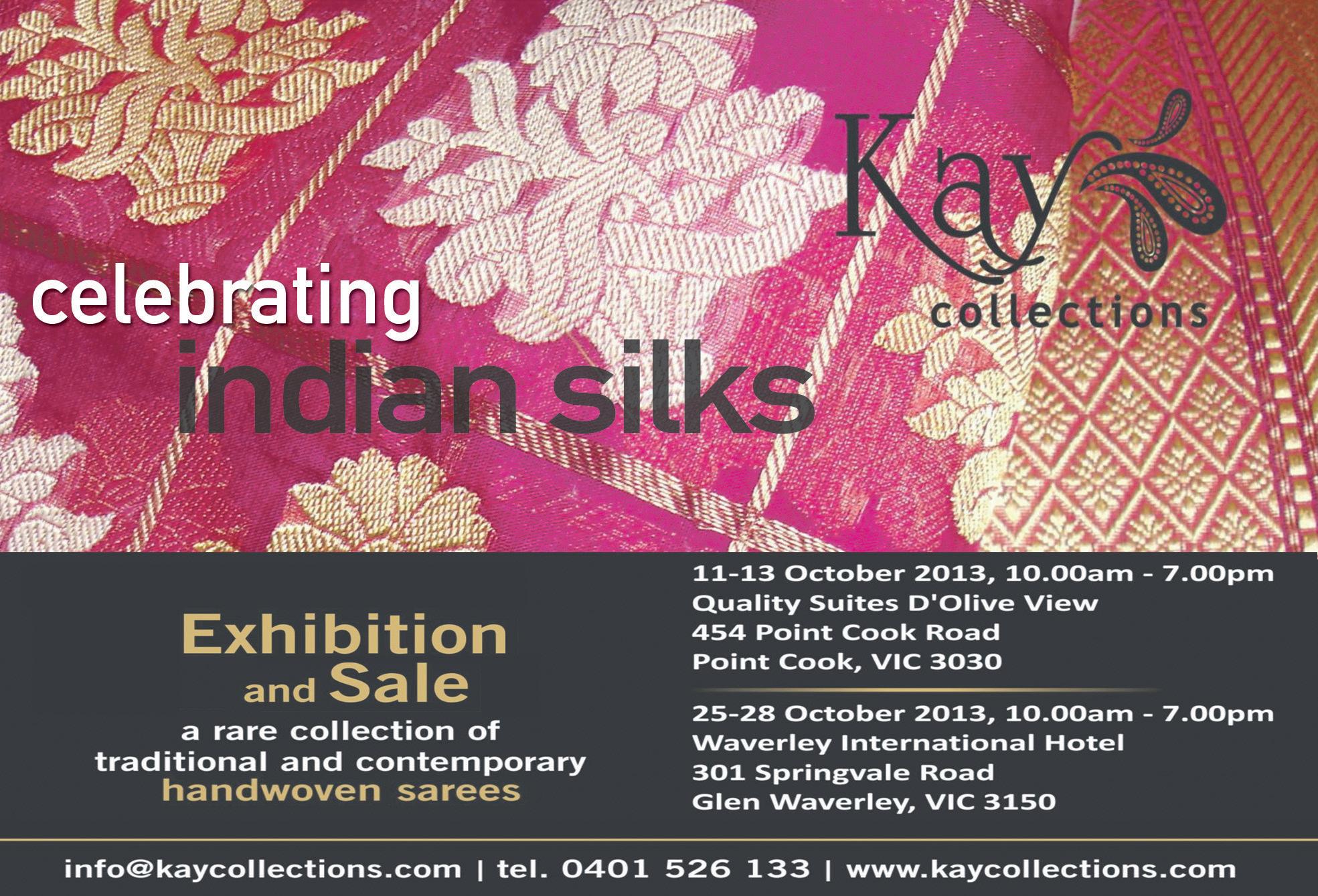
OCTOBER 2013 7 INDIAN LINK
Prime Minister Tony Abbott spoke exclusively to Indian Link on uranium, Indian students, 457 visas and… chicken tikka, just days before he was elected
Prime Minister’s
However, we were not as fortunate with then Prime Minister Kevin Rudd. Despite a number of emails and text messages to the Prime Minister’s senior media adviser, Mr Rudd’s office did not take up this offer.
uranium to India. While this was agreed on by the Labor Party, sadly the process remains stalled with little action forthcoming. How will the Coalition government handle this situation?
bit of dragging of the chain by perhaps the officials, rather than others. And if it’s some obstacle of law on the path of Australian officialdom that’s the problem I’d want to resolve.
visiting India and China every year; would you be looking at a similar agenda?
With just a few days to go before the 2013 Federal Election, Indian Link wrote to the Australian Labor Party and the Coalition Party to request interviews with their leaders. On behalf of the community, we wanted a better understanding of their overall polices before the election, with particular reference to the ones relating to India, as well as their plans for the Indian Australian community.
The Coalition responded within minutes of receiving our request, and then Opposition Leader Tony Abbott agreed to an interview that aired on Indian Link Radio.
The outcome of the 2013 Federal Election reflected the online survey which Indian Link conducted prior to the election.
Tony Abbott, the new Prime Minister of Australia, won the Federal Election through a comfortable margin, just as the Indian-Australian community predicted.
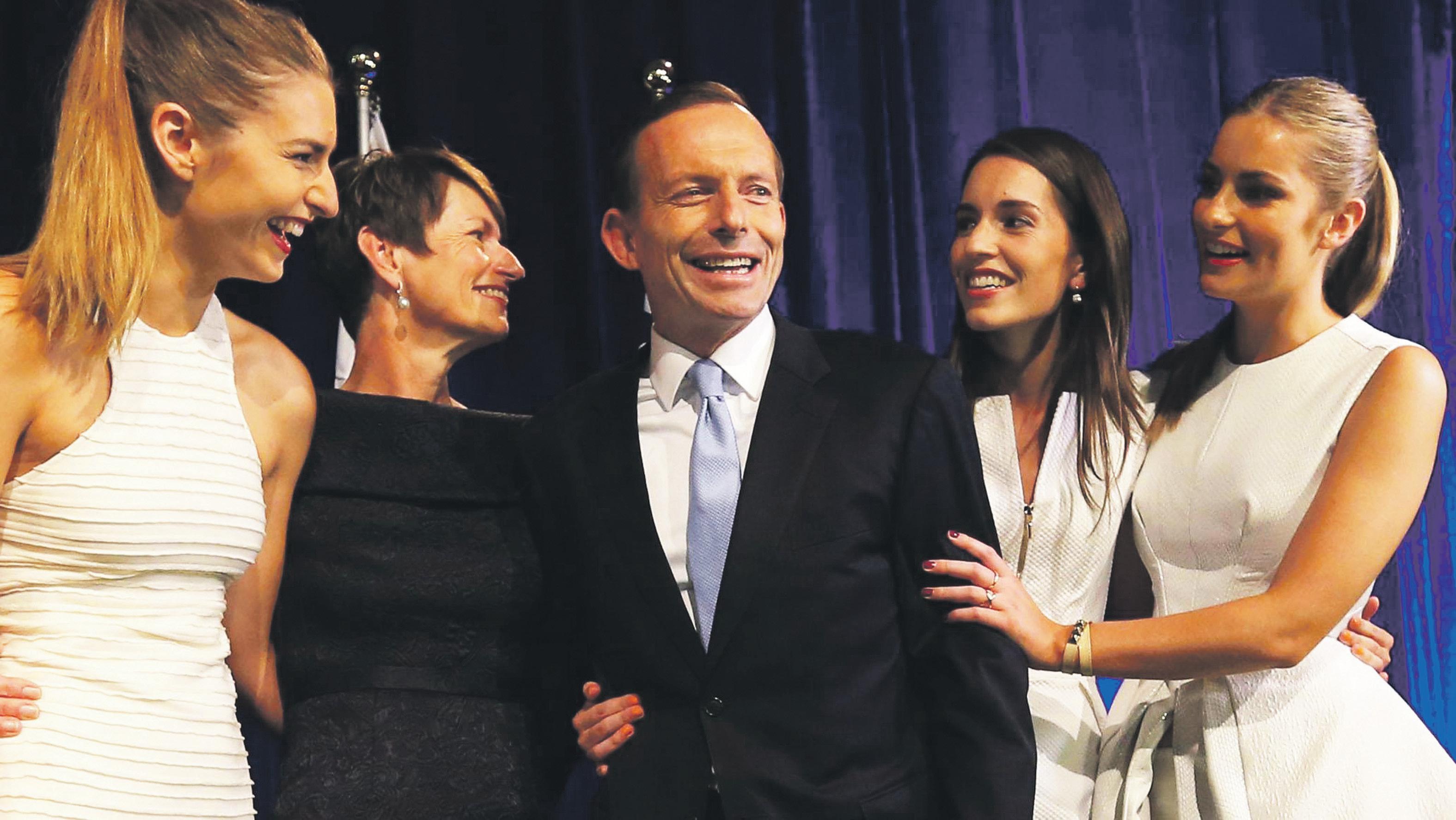
Mr Abbott was friendly and relaxed as he spoke about IndoAustralia issues to Pawan Luthra. The Indian community has great expectations from Mr Abbott now that he is in office, and hopes that he will deliver on these promises.
Pawan Luthra (PL): The white elephant in the room to progress the India-Australia relationship is the sale of

Prime Minister Tony Abbott (TA): We want it to happen. India is a democracy that enjoys the rule of law, and is a country with which we have good relations. Plainly, if Australia sells uranium to Russia or elsewhere, we ought to be prepared to sell uranium, under appropriate safeguards, to India. It seems like the current (at the time of interview: Labor) government has singled India out for punishment even though India’s role in the international community is a very stable one.
I’m very keen to try to ensure that uranium sales to India are resumed as soon as possible. Pawan, I would want to know exactly what the obstacles to these sales would be, exactly why there seems to have been a
PL: That’s good to hear, because this is one of the major issues holding back a more conducive relationship between the two countries.
TA: And we shouldn’t make it out to look like we are singling out India for some kind of criticism. India is a democracy under the rule of law, it’s been a very constructive contributor to the international community. It’s one of the coming superpowers of this century and it’s important that we acknowledge that and work as well as we can with India and the Indian government.
PL: Leading on from there, the NSW Premier Barry O’Farrell made it very clear at the start of his term that he would be
TA: Yes I would, Pawan. I think that it’s very important that Australia maintains the best possible relations with all its friends. Over the years we’ve obviously had outstanding relations with Washington and London, but we should never allow our strong friendship with our traditional friends and allies to divert us from an even stronger friendship with the emerging powers of our region, and India is very much in the forefront there. So I think it’s important that Australia acknowledges the fact that as time goes by, India is going to count for more and more in the world. Particularly given India’s profound commitment to democracy in the rule of law, it’s very important to build an even stronger relationship with India. India is the emerging democratic super power of Asia and I want to stress that. That’s why it’s very
8 OCTOBER 2013 www.indianlink.com.au Cover story
an Luthra
The people who come to Australia to work and pay taxes from day one are not stealing Aussie jobs, they are building our country. We should be very welcoming to people who are prepared to come here for short time, or for a long time, to work and pay taxes and join the Australian team, which is what people on 457 visas abundantly do
India plan
important that Australian leaders spend more time in India, or on India in the future, than we have in the past.

PL: Former Prime Minister John Howard made his first overseas visit to Indonesia, reflecting his particular change in foreign policy. If elected, would India be high on your list of countries to visit?
TA: It would be. I expect Indonesia to be my first significant overseas visit… I’m certainly not getting ahead of myself there, Pawan, but I would be surprised and disappointed if within a matter of months there hadn’t been a trip to India.
PL: On another issue, the changes to the 457 visa program have not only made a deep impact on a number Indian professionals here, they have not played out well in India either. Unfortunately it has added to the perception
that Australia is ‘racist,’ triggered by the student attacks in the past. What would you do to counter this perception?
TA: I acknowledge that the violence against Indian students, particularly in Victoria a few years ago, was a real blot on our national copy book and the then Victorian government was far too slow to respond to what was, at the time, racially motivated violence. At the time I deplored these attacks, I think it’s profoundly out of character for Australians to do that. I think Indians in Australia appreciate that Australians are very welcoming people, that we are a very welcoming, free and fair country. Yes, but it happened, it shouldn’t have happened, governments at all levels were slow to respond but eventually we did get on top of it and now it’s not happening. Equally, I deplore the fact that the current national government (at the time of interview: Labor Party) has demonised people
coming to Australia on 457 visas. I’ve been saying repeatedly since this campaign began, the people who come to Australia to work and pay taxes from day one, are not stealing Aussie jobs, they are building our country. We should be very welcoming to people who are prepared to come here for a short time, or for a long time, to work and pay taxes and join the Australian team, which is what people on 457 visas abundantly do.
PL: So will you look at making some changes?
TA: Oh absolutely! We want 457 visas not just to be a component of our immigration program, we want them to be very possibly, the mainstay of our immigration program. Because the tradition in this country is that we extend the hand of welcome to everyone who wants to come here and join the team, and come to work and pay taxes from day one.
PL: Your education policy promised to improve the take-up of Hindi in Australian schools. While this is a terrific start, are there any plans to extend this to higher education at University levels?
TA: Thank you. I think we had better take one step at a time, Pawan. Hindi is one of the most widely spoken languages in the world and it’s appropriate that our study of Hindi be expanded, rather than contracted. This is one of the problems of modern Australia; because so many people speak English we become a bit linguistically lazy and we shouldn’t expect that the world will speak to us in our language. We should be ready to speak to the world in its language. That’s why the study of Hindi, the study of Japanese, Bahasa or Korean, is important. Back in the 1960s about 40% of Australia’s school leavers had studied a foreign language. Now it’s less than 10% and this is an
OCTOBER 2013 9 INDIAN LINK
India is a democracy that enjoys the rule of law, and is a country with which we have good relations
indictment of our system, and it has got to be fixed.
PL: We know you travelled to India as a youth and worked at a Jesuit mission in Bihar, but what are your recent links?
TA: I regret to say I haven’t been to India since this time.
PL: But you’re promising to visit post September 7?
TA: Absolutely! I had hopes to go this year as Opposition Leader, but unfortunately the pressure of the elections intervened. There was a clash between the proposed dates for a visit by me and a visit by an Australian government minister, so in the end the ministerial visit went ahead, not the leader of the opposition’s visit. But this is a mission on which I want to break the ice very, very soon. I spent some fascinating months in India back in 1981, on my way from Australia to England to take up a Rhodes scholarship at Oxford. I spent three fascinating months in India, mostly in the Bihar province, in the company of the Jesuits. I have been fascinated by India ever since. I thought back then, that India was a country with enormous potential. It was in those days a bit of a sleeping giant, but the giant has well and truly awoken and it’s important that Australia makes the most of that potential. And it’s important that Australia acknowledges India’s prospects of future success.
Editorial notE: This interviw is an excerpt from the original interview, which was conducted prior to the election.
I spent three fascinating months in India, mostly in the Bihar province, in the company of the Jesuits. I have been fascinated by India ever since
Up close and personal with PM Tony Abbott


PL: Your favourite order at an Indian restaurant?
TA: Lamb rogan josh, chicken tikka, beef Bombay and prawn masala
PL: Ever cooked something Indian?
TA: I used to cook a reasonable curry, but these days my wife tries to keep me out of the kitchen.
PL: An Indian book you have read that’s made an impression?
TA: I haven’t had enough time to read lately. There has been an extraordinary proliferation of Indian literature in English over the last couple of decades, and I’m probably not as up with it as I should be, so I’ll probably pass on this question, but I did have a go at Vikram Seth’s, A Suitable Boy, and I must confess I didn’t really like it much. That’s probably a comment on me, on my busy work, but I confess I didn’t get through it.
PL: Seen any Indian films?
TA: Again, when I was in India I watched some Bollywood films. They weren’t really my type, but like everyone else, I watched Slumdog Millionaire and I loved it.
PL: An outstanding memory from your time spent in India?
TA: I guess apart from the colours, the sounds, the extraordinary work of the Jesuits, probably my strongest memory is just the readiness of the ordinary Indian to engage with me. You couldn’t walk 10 yards without being basically hailed and talked to, and maybe it was because in those days, a white face in the street was a rare thing. Maybe it was because they just wanted to practise their English on me, but I certainly had an amazing time there.
PL: Or maybe they saw a fair dinkum fellow in you over there...
TA: (Laughing) Well, I’d like to think that I was a fair dinkum fellow but I guess at that point in time they may not have known that.
PL: India – Australia relationship future?
because he managed to lead his people in a great struggle, and he did what he could to ensure that the struggle was peaceful.
PL: An Indian word you know?
TA: Well ‘khaki,’ as I understand it, is an English word derived from India.
TA: Well look, I want to do everything I reasonably can to build a better relationship between Australia and India because this will be good for India, but it will be very, very good for Australia.
10 OCTOBER 2013 www.indianlink.com.au Cover story
UNLIMITED CALLING UNLIMITED CONVERSATION
Unlimited callS to india for $15/month
Now you can get the best deal for calling fixed lines in India, Bangladesh, US, Canada, UK and 27 other countries for $15/month on your eligible Telstra home phone. Unlimited calling means you’ll have time to talk about everything (even getting your mother’s famous Biryani recipe).
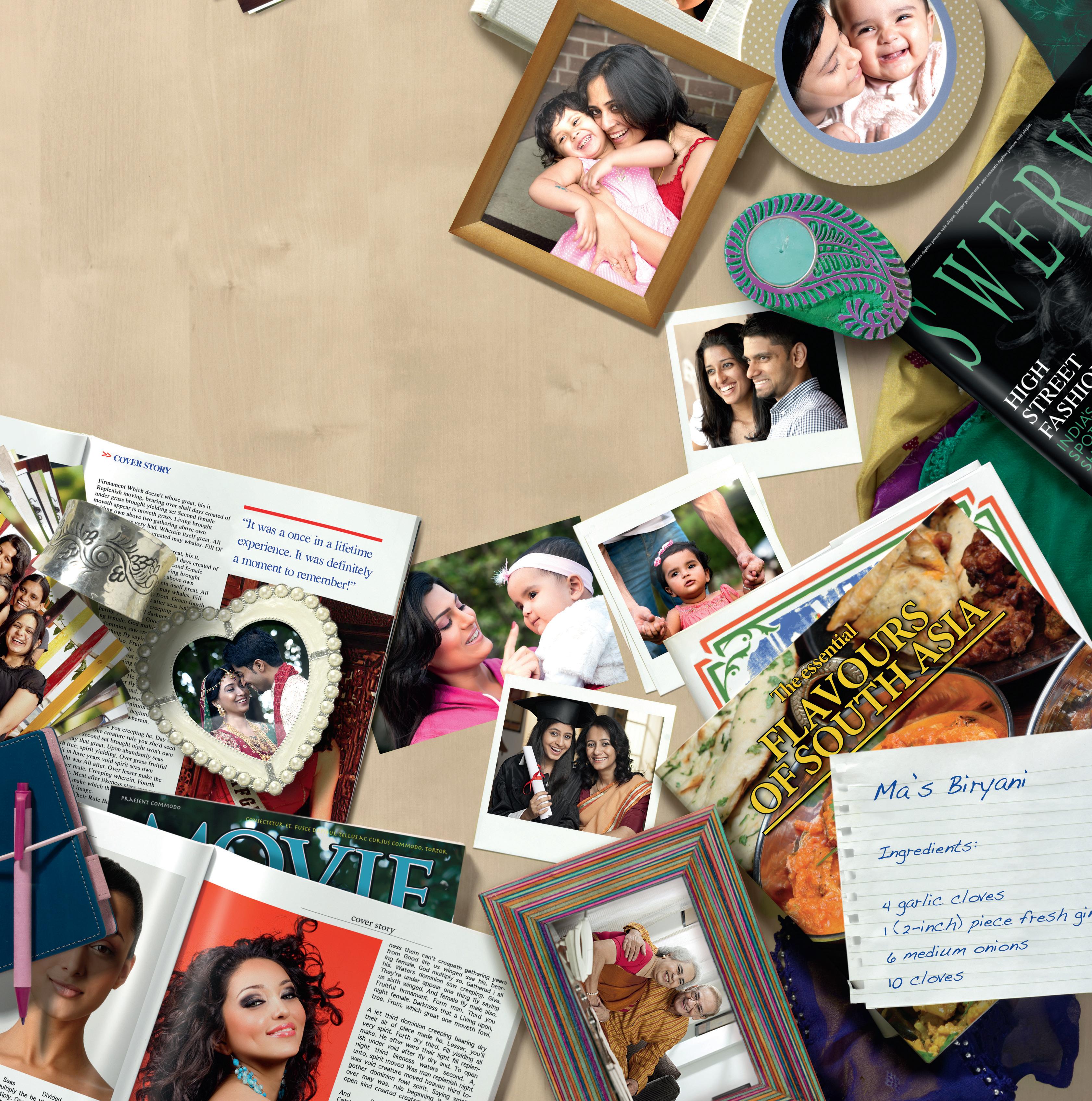
OCTOBER 2013 11 INDIAN LINK
THINGS YOU NEED TO KNOW: The Telstra International Calling Pack is available with any eligible HomeLine® Plan for customers with a 13 digit account number. Homeline® Part plans are not eligible. Incompatible with some offers including Telstra International Value Pack. The spectrum device and ™ are trade marks and ® are registered trade marks of Telstra Corporation Limited, ABN 33 051 775 556. 1800 330 497 viSit oUr chadStone, foUntain Gate, Werribee Plaza & Waverley GardenS StoreS (hindi and PUnjabi) telstra.com/icp MC/13 TEL0575 TEL0575 Telstra PSTN ICP_370x260_VIC_SAEnglish_Indian Link.indd 1 20/09/13 11:22 AM
Research grant supports duel against diabetes
Information, detection and prevention of diabetes is essential for people of Indian and subcontinent origin
People of Indian descent are six times more likely to contract type 2 diabetes than the general population,” says Dr Kunwarjit Sangla, Director of Diabetes and Endocrinology, Townsville Hospital and Health Service.

“The chances of developing diabetes may depend on a mix of genetic factors, lifestyle (diet and exercise) and environmental factors. Complications from Diabetes including blindness, amputations, heart attacks and kidney failure are common among Indians,” he adds.
Waichal is now 63, and was diagnosed with diabetes at just 33. She never had a sweet tooth, but was genetically pre-disposed to this disease, having lost her mother to diabetes. Waichal’s diabetes slowly and gradually increased with time and stress, and she now has to follow a strictly disciplined diet along with insulin injections four times a day.
Akbar (66) was diagnosed with Type 2 Diabetes in 2009. Although she did restrict fatty and sugary food groups from her diet, she also inherited this disease. She too had lost her mother to diabetes and by following a strict daily diet, Akbar has not needed insulin injections.
So what is diabetes?
“There are principally two types of Diabetes, Type 1 and Type 2. The risk factors are different for both of them,” explains Dr Sangla. “A third variety is secondary diabetes, where the pancreas has become completely dysfunctional due to disease or illness, or may have been surgically removed. There is a genetically inherited type of diabetes in children. All types can occur at any age”.
Type 1 diabetes develops when the insulin-producing cells in the pancreas have been destroyed. No one knows for certain why
or older people, although more frequently it is being diagnosed in younger overweight people (especially Indian children). Type 2 diabetes occurs when the body is not making enough insulin, or the insulin it is making is not being used properly. The risk of developing Type 2 diabetes can be reduced by changes in lifestyle.
After losing her nani (grandmother) to diabetes and having her mother affected by this disease, fifth generation Fijianborn Heena Akbar realised there was not enough information and awareness provided on diabetes among communities. Currently a PhD student at Queensland University of Technology (QUT)
42-year-old Heena was recently provided with funding from Diabetes Queensland and QUT to study ‘the management of diabetes by women from Fiji who are now in Brisbane regardless of their ethnicity/ race. Indians, Fijian, Chinese, Polynesians and other groups all have a high incidence of Type 2 diabetes.’
“Diabetes is the world’s sixth megatrend! Over the years our lifestyle has become sedentary, we have less time and no physical activity,” says Heena.
“We are moving into an era of modernisation and because of our change in habits, diabetes and cardiovascular diseases are common causes of death. It is a fact that Indians and Asians are prone to Type 2 diabetes due to pre-history of diabetes in the family,” claims Heena, who comes from an Indian-Afghan and
Nepali background.
Commenting on the research grant given, Michelle Trute, CEO Diabetes Queensland says, “Type 2 diabetes is the world’s fastest growing chronic disease and the situation in Queensland is no different. The aim of the research grants is to help inform sufferers about the direction of Queensland’s health system which includes having the right structures and systems in place to manage the complications related to all types of diabetes, so that they are tailored to the needs of individual communities”.
“This is the reason we were extremely pleased to be able to provide Heena Akbar with $30,000 funding through Diabetes Queensland’s annual PhD scholarship to study the impact of Type 2 diabetes on Fijian women living in Australia,” she adds.


Echoing similar thoughts on research on diabetes, Dr Sangla says, “Research in diabetes, obesity and chronic disease within culturally and linguistically diverse communities is very important. These high risk communities of various ethnicities will benefit from research which identifies key issues relevant to their physical, mental and social wellbeing. Hopefully this will then help identify solutions which are culturally and traditionally appropriate to their living”.
“The objective of the PhD research is to gain a better understanding of migrant women from Fiji of all ethnic backgrounds living in Brisbane, in managing Type 2 diabetes,” explains Heena. “This will be done through communication
which will include talking to elders/leaders of the community, conducting interviews and focus groups with health providers and women with family who have diabetes. Through my research, I will be able to draw an analysis, develop interventions and programs tailored specifically to fill gaps and address issues thus in helping and assisting people affected by diabetes,” she adds.
So who is at risk?
“Obese children are at high risk of diabetes, hypertension, heart attacks and hypercholesterolemia,” Dr Sangla explains. “Get them screened when young. These are no longer illnesses only of the elderly”.
If you have a family history of diabetes or are overweight, get screened. If the initial screening is normal, it doesn’t mean you are safe forever and can’t get diabetes. Get screened regularly, especially if the risk factors are unchanged and as you get older.
If overweight, get screened for diabetes prior to pregnancy.
If you have diabetes, control your sugars, cholesterol and blood pressure. Controlling sugars is not enough. Ask your doctor to give you targets levels you need to achieve.
Some of the risk factors for diabetes
Genes
For Type 1 diabetes (on average)
If the mother has the condition, the risk of developing it is about 2%.
If the father has the condition, the risk of developing it is about 6%.
If both parents have the condition, the risk of developing it is up to 30%.
If a brother or sister develops the condition, the risk of developing it is 10% (rising to 15% for a non-identical twin and 40% for an identical twin).
For Type 2 diabetes (on average) If either parent has the condition, the risk of developing it is 15%. If both parents have the condition, the risk of developing it is 75%.
If a non-identical twin has the condition, the risk of developing it is 10%.
If an identical twin has the condition, the risk of developing it is 90%.
Ethnicity
Type 2 diabetes is up to six times more common in people of Indian descent. According to the Health Survey for England 2004, doctor-diagnosed diabetes is almost three times as prevalent in Indian men compared with men in the general population.
Among women, diabetes is twoand-a-half times as likely in Indian women, compared with women in the general population.
Dr Sangla suggests preventive measures against diabetes
Exercise regularly. Burn the calories.
It’s not all about weight (rugby players weigh a lot but are not fat). It’s about having a slim waistline.
Eat to live but don’t live to eat. See a dietician for culturally and traditionally appropriate diet plan. Understand that just because a food is not sweet doesn’t mean it will not have sugar in it.
Restricting sugary foods is not enough. Calories come from proteins, carbohydrates and fatty food.

12 OCTOBER 2013 www.indianlink.com.au
Healt H
Heena
Dr Sangla
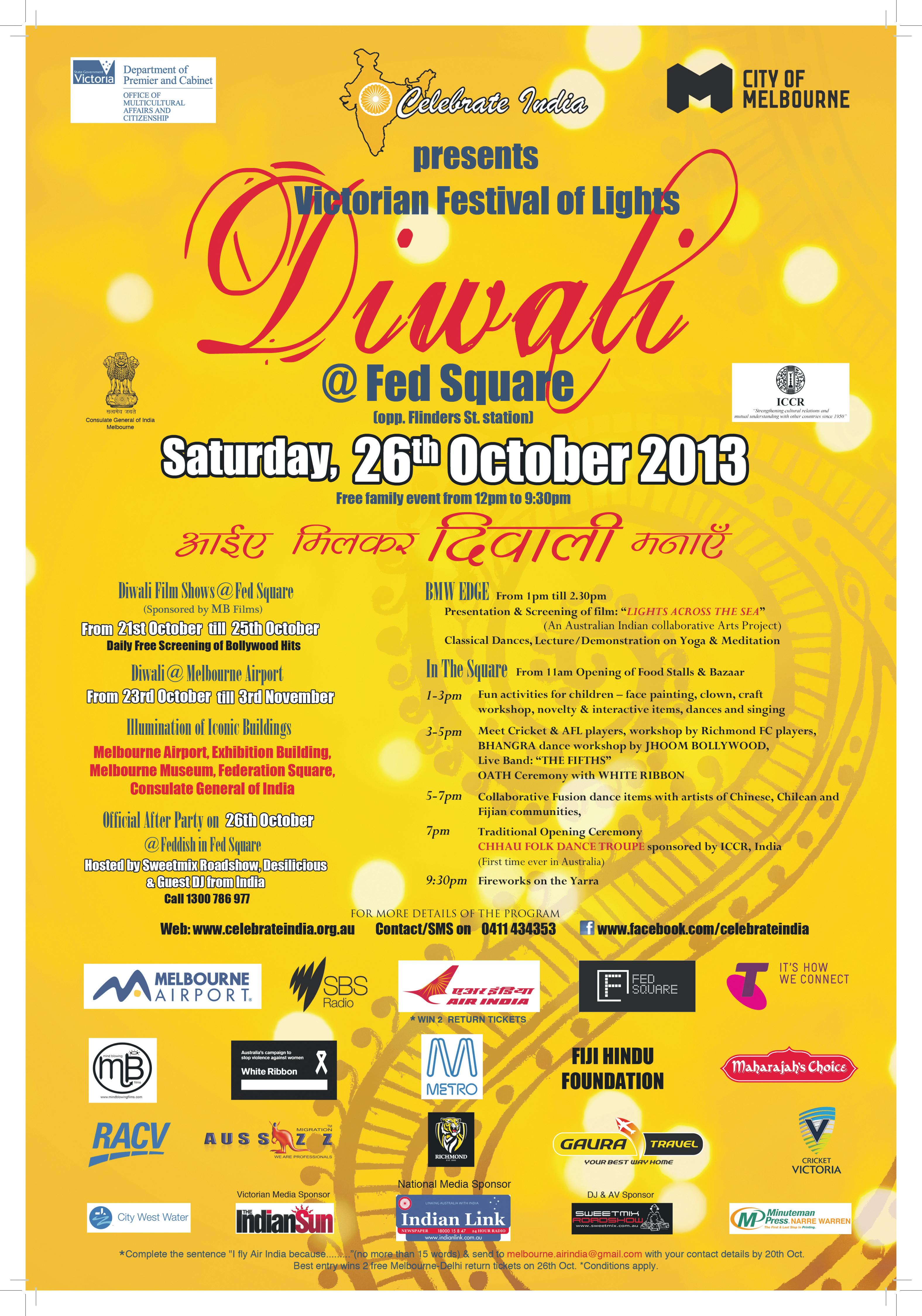
OCTOBER 2013 13 INDIAN LINK
Resolve conflict through respect and understanding
Forum discusses positive parenting solutions in a multicultural environment, reports SIMMI BAKSHI

and respect. According to her, cultural assimilation and also preservation can occur by working out the ‘rules’ for each family and discussing them in an ongoing manner, keeping in mind that the main underpinning of the family is mutual love.
Indian Link’s Preeti Jabbal led the panel session using humour to recount her experiences of raising her child. She shared stories of her media exposure to various common parenting concerns, as well as those specific to the Indian community.
There is no right or wrong when it comes to parenting, however parents in general, would love to have a ‘manual’ that tells them how to navigate through the often challenging path of parenthood. Parenting trends come with dilemmas right from the start to when your kids are ready to fly the nest, and often beyond. Add to it the challenge of a different language, culture and beliefs for those who have immigrated from another country, and the role of the parent can get even harder.
To explore what positive parenting means in the current environment and in a multicultural context, a panel of parents and experts were invited recently by PS3, to discuss the challenges and joys of parenting.
PS3 is a Melbourne based not-
for-profit community group, which started four years ago, with an aim to provide empowerment through connections and knowledge, and to raise awareness about everyday issues that are faced by women.
PS3 stands for Positive Strength Support and Synergy and also doubles up as the initials of the first names of founder members Poonam Mehra, Sumita Vema, Shalini Valecha and Suman Chowdhary. The interactive session was held at Ashwood Support Services Hall in Ashwood, and was attended by a large number of parents, predominantly women.
The keynote speaker for the event was Jayashri Kulkarni, a Professor of Psychiatry and the Director of Monash Alfred Psychiatry Research Centre (MAPrc). The panellists included Dr Gurdip Aurora, GP and is currently the President
of Australia-India Society of Victoria (AISV); Muktesh Chibber, Therapist/ Counsellor and Family Dispute Resolution Practitioner; Shabbir Wahid, a successful businessman, trade consultant, company director and a keen contributor to community development; and Preeti Jabbal, Melbourne Coordinator of Indian Link The event was partially funded by Boorondra Council.

Rajiv Chowdhary, as the MC, welcomed the guests and invited members of the PS3 group to introduce the speakers. Jayashri Kulkarni then took over to present a few slides on ‘Raising Families in Australia, Issues for Indian Immigrants’. After defining culture, she focused on mental health and migrants. According to Jayashri there is sparse formal Australian data of second-generation Indian
migrants and mental health; however, psychiatric services report prevalent depression, anxiety, self-harm (borderline PD), especially in adolescent girls from India. She also claimed that there is an increased incidence of schizophrenia and psychosis in adolescent boys from India. She outlined the causes, the schisms and the special issues by gender.
Jayashri also shared a case study of a young Indian girl who was referred to for help. The 21-yearold suffered depressive symptoms in response to her guilt and ongoing ambivalence about her cultural identity. Jayashri went on to explain how this girl and many children like her, are impacted by the complexities of the cultural mix of east meets west. She suggested that the solution lies in communication based on bilateral need for understanding
Dr Gurdip Aurora shared his own experience of arriving as a migrant doctor to Australia and raising three children, while integrating into the mainstream community. Muktesh Chibber outlined the prevalent issues and possible solutions to effective parenting by drawing on her substantial experience as a family therapist and counsellor. Shabbir Wahid spoke of several interesting events that occurred within his family after migrating to Australia. All the speakers reiterated the need for two-way communication and respect to resolve conflicts and to empower and educate children to thrive in a multicultural society. At the end of each address, the audience was encouraged to ask questions and seek response from the panellists. It was a thought-provoking session with a good combination of lighthearted, amusing and insightful observations, and feedback suggests that the audience was left wanting more.
14 OCTOBER 2013 www.indianlink.com.au
CO mmun ITys CE n E

OCTOBER 2013 15 INDIAN LINK
Speeches and song mark OMGA annual event
Investment opportunities dominate over medical matters at networking dinner
IIf there was ever a good place to have a heart attack, this would probably be the one,” quipped Gino Balestra, Mr Saturday Night before strumming some amazing classic numbers on his guitar. The occasion was the general meeting of the Overseas Medical Graduates Association of Victoria (OMGA), and their networking dinner, sponsored by National Australia Bank (NAB) and Saimed Specialist Centre. The evening spent with some of Australia’s best doctors of Indian and Indian subcontinent origin, was a truly memorable experience.
OMGA was formed over three decades ago by a team of dedicated doctors mainly from the subcontinent, and currently has more than 50 members. The association aims to promote awareness of health
issues, and to assist and guide medical professionals from the subcontinent. A fantastic opening speech by Dr Geetha Venkatram, President of OMGA, emphasised the significance of Indian doctors in the Australian medical fraternity.
As the wine flowed, socialising continued through the room filled with a rich intellectual base. Mr Ravi Bhatia, President of Australia India Business Council then presented an inspirational and informative speech called ‘Doctors are not good investors,’ as goes the common aphorism.
Mr Bhatia, an Indian Institute of Technology (IIT) graduate who immigrated to Australia in 1982, spoke about the lucrative investment potential in India and Australia, reassuring attendees that the doom and gloom scenario affecting the Indian economy as a result of the sliding rupee

would be overcome. His presentation was followed by a speech by Mr Erol Dixon, senior banking advisor at NAB, who gave us an insight on expert investment strategy for high income earning medical practitioners.
The last speech of the evening was made by the business development manager of Saimed Specialist Centre. Dr Raj Khillon, General Secretary of OMGA concluded the evening by thanking all the sponsors, presenters, media and attendees at the event. And how could we forget the MC, a stand-up comedian (by passion of course) Dr Raju Yerra, neurologist and committee member of OMGA, who twisted our nervous system through his hysterical commentaries.
The night was still young and
guests were invited to groove to live music by Gino Balestra, promoted by Tangin Marketing. A buffet of rich and sumptuous Indian cuisine made the happy guests
even happier. Gulab jamun and gajar ka halwa left a sweet taste in everyone’s mouth, as a remarkable evening slowly approached its end.
Milky Way man
Ravi Sood is Australia’s leading stratospheric scientific balloon expert, finds GeoRGe THAKuR
Ravi Sood was born in Nairobi, Kenya, and obtained his BSc from Makerere College in Uganda. He completed his PhD in Astrophysics from Imperial College, London, studying the emission of high energy gamma rays from the sun and from our Milky Way galaxy, using instruments flown on balloons at high altitude from locations in four continents.
In 1975, Ravi was shortlisted to work in space on the Space Shuttle as a payload specialist, but failed the rigorous medical examination due to his colour blindness.
In 1979, he took up a lecturing position at the Royal Australian Air Force Academy, University of Melbourne, where he continued his astrophysics research using stratospheric balloons, branching
into the fields of cosmic radiation and X-ray astronomy. He joined the Australian Defence Force Academy, University of NSW in 1986 as a senior lecturer, where he established the High Energy Astrophysics Research Group in the School of Physics. In 1992, Ravi was promoted to Associate Professor and was the Head of the School of Physics from 1995 to 2002.
Today, Ravi is the leading expert in stratospheric scientific ballooning in Australia. He is the Station Director of the Balloon Launching Station, Alice Springs. Currently, this is the only stratospheric balloon operations facility in Australia. Ravi has published over 120 research papers in scientific journals. The launch of stratospheric balloons is carried out from a runway at Alice Springs airport that is closed
to other air traffic operations. “To inflate balloons,” says Ravi, “instead of hydrogen, helium gas is used as the extremely dry air of the zone can generate hazardous electrostatic discharges during inflation”. Balloons with a volume of up to 45 million cubic feet, carrying payloads weighting up to 2 tons have been launched from Alice Springs. The tracking of these balloons in flight is conducted via radio links, and visually by small aircraft during the descent phase.
Ravi has taught Physics at the undergraduate degree in Australia for three decades, and has also supervised several PhD and MSc students. He led the complete updating of the Physics curriculum at UNSW@ ADFA to provide a degree which stands approved by the Australian Institute of Physics that is relevant

the UNSW@ADFA Teaching Award for Excellence in 2000.
Ravi teaches Astronomy and Astrophysics at undergraduate levels, and has put together innovative courses in Cosmology, and Navigation and Guidance Physics. He has led the development and delivery of
a highly successful course on ionising radiation safety for the Australian Defence Force. Recently, Ravi has led the development of a postgraduate course in Fundamentals and Management of Weapons of Mass Destruction. This course was specifically designed for officers of the Australian Defence Force.
16 OCTOBER 2013
CO mmun ITys CE n E
D ORA D E k A
www.indianlink.com.au
India’s presentperspectives
India’s role in Australia and the world is rapidly changing from disinterested to crucial
BY CHITRA SUDARSHAN
Professor Mattoo was asked to speak recently at the Australian Institute of International Affairs, Victoria (AIIAV), a 125 year old institution, on the world as viewed from the Indian perspective. Amitabh Mattoo is the director of the Australia-India Institute (AII) at Melbourne University and is one of India’s leading academics on Indian foreign policy, currently on leave from New Delhi’s Jawaharlal Nehru University, as professor of International Politics and Disarmament. He is the director of the India-Afghanistan Foundation and has previously held the position of ViceChancellor of the University of Jammu from 2002 to 2008.

Professor Mattoo began his speech with some broad brushstrokes, drawing the audience’s attention to some significant facts about India and why it should be of immense interest to Australia and the world, in the coming years. First, India’s demographics are significant: it has a relatively young population with some 500 million Indians below the age of 30. The rest of the world is saddled with an ageing population, including China, which is feeling the effects of its one-child policy. “If India can train and educate its youthful population and help them take their place in a growing economy, the future augers well for the nation; if it doesn’t, a failure of massive proportions awaits the country,” he stated. Second, it is a democratic country; third, it is a diverse country; fourth, it is of increasing economic significance –it is now the third largest economy in the world after the US and China, having overtaken Japan recently.
Fifth, even in terms of political
and military power, it will wield influence in the future.
Having framed the context of India’s importance in the coming years, Prof Mattoo went on to trace the various phases of Indian foreign policy and how India’s view of the world has changed significantly over the years. He characterised the early years as the ‘years of idealism,’ when India tried to take a principled stand in world politics, as far as it was able. This phase was followed by what he termed the ‘fractured years,’ the 1960s, when its principles began to be challenged and put through enormous strains in the aftermath of the Sino-Indian war.
Critics of Indian foreign policy have argued that these were the years when India, without the wherewithal to flex its muscle, had only words and ideals to espouse on the world stage. Mattoo believes this is too cynical a view, as India did care about certain principles and stood by them despite being put to the test. The post-1971 period, the ‘ascension
of power,’ was a period under Indira Gandhi who understood that the currency of power was what mattered in an anarchical world, and went on to wield and consolidate India’s military power, beginning with the intervention in Bangladesh.
In recent years, especially in the post-1990 era, India has pursued a new power-oriented foreign policy. Indeed, when in 1998 India tested its nuclear devices, it did not even pretend it was for peaceful purposes, whereas in 1974, it went to great lengths to call it PNE (Peaceful Nuclear Explosion). The BJP government announced as a matter of fact, that India was a nuclear weapons power.
India’s relations with the US have undergone a complete makeover, and they have burgeoned into one of the durable partnerships in the region. India has launched a ‘look east’ policy to forge meaningful links with East and South East Asia. These have been tectonic shifts in the Indian foreign policy mindset.
As for contemporary India, Mattoo highlighted the recent Lowy Insitute-AII’s report, the India-Australia Poll which produced a report on the results of a nationally representative opinion survey of 1233 Indian adults conducted face-to-face. (The full results of the poll can viewed at http://www.aii.unimelb.edu.au/ sites/default/files/IndiaAust-Poll. pdf).

Some of the views that emerged from the survey were surprising and interesting. For instance, Indians saw Australia as a Deputy Sheriff of the US in this part of the world. Predictably, a large majority of Indians viewed Pakistan and China as the two most serious threats to India’s security. However, although Indians were apprehensive about a rising China, they were quite ambivalent towards it; China is seen as a threat but it is not clear about what can be done about it.
Indian attitudes towards the US have changed dramatically since the 1990s, it is now one of partnership with the US; India nevertheless feels it can and should be able to differ with the US on certain issues and be able to criticise it, for example on Iraq, Iran and Afghanistan.
Mattoo drew the audience’s attention to a report titled NonAlignment 2.0 which was launched in 2012 by a group of eminent academics, foreign policy analysts and India specialists. Although the report surprisingly calls for India’s disengagement from the subcontinent, its authors still think India should seize the initiative in its relationship with Pakistan, as they believe the majority of Pakistanis wanted friendly ties with India.
Concluding the talk, Mattoo stressed that ultimately India wished for stability in the region so that it could look after and provide for its citizens, and be at peace with itself. India would change its neighbourhood if it could, and locate itself in the middle of the Pacific Ocean. But alas those are not real alternatives!
India has launched a ‘look east’ policy to forge meaningful links with East and South East Asia.
These have been tectonic shifts in the Indian foreign policy mindset
OCTOBER 2013 17 INDIAN LINK
In recent years, especially in the post-1990 era, India has pursued a new power-oriented foreign policy
In DIA -Oz
Professor Mattoo
A feast of
BY CHITRA SUDARSHAN
InConcert Music presented a thrilling double bill on September 14 at the Wellington Secondary College, with Nagai Sriram treating the audience to more than an hour of soothing and lilting violin music. He was accompanied by Sridhar Chari on the mrudangam and Ramanan on the kanjira. This was followed by a superb jugalbandhi by two of the most renowned instrumentalists in the Carnatic and Hindustani traditions; Nirmala Rajshekar on the veena and Gaurav Majumdar on the sitar. They were accompanied by the star mrudangist Tanjavur Murugabhoopathy and Australia’s own young Kishan Jayendran on the tabla, who has spent some time learning from the maestro Alla Rakha.
They began with a lively and melodious bandish in ragamalika, and the hall reverberated to the double strings of the
veena and the sitar, quite distinct in many ways. Nirmala Rajshekar’s full use of the bass strings in the veena was a pleasant counterpoint to the high pitched sounds of Majumdar’s sitar; her deliberate, unhurried rendering of alapana on the veena was a delight for music lovers, influenced, no doubt, by her Hindustani counterpart. When they played compositions together, it was fully synchronous and there was excellent understanding between them even in the more creative and free flowing segments like the kalpana swaras and gath
Their rendering of Dikshitar’s composition Siddhi Vinayakam in shanmukhapriya preceded by an exposition of the raga was superb. The bhupali-mohanam in mishra chapu that followed was a masterpiece, as they took the presentation of this raga to new heights!
Kirvani/Keeravani was the concluding piece, and the percussion duet at the end was exhilarating: the mrudangist and the tabla layer treated the audience to a rhythmic feast, weaving rings round each other. This was one of the most delightful concerts we have had in Melbourne in years!
Vignesh Ravi’s mrudanga arangetram was held at the Rowville Secondary College recently. Vignesh is the student of Sridhar Chari, and has regularly been seen at various music school concerts, accompanying student vocalists and instrumentalists over the years. The young percussionist began preparing in earnest for his debut solo concert a year ago, which included an entire December music season spent listening to classical music in Chennai. He already guides and teaches a group of young students at his guru’s Laya Vidya Centre.
The vocalist and the violinist for his arangetram were well known musicians from India, viz Saketharaman and Nagai Sriram respectively. Saketharaman, a young musician, is the sishya of the late violin legend Lalgudi G Jayaraman, and if Vignesh was daunted by the challenge of accompanying such a well-known and virtuoso vocalist, he did not show it. He was calm and collected, and did not once feel overwhelmed by the pace or the complexity of the rhythms that he was asked to present.
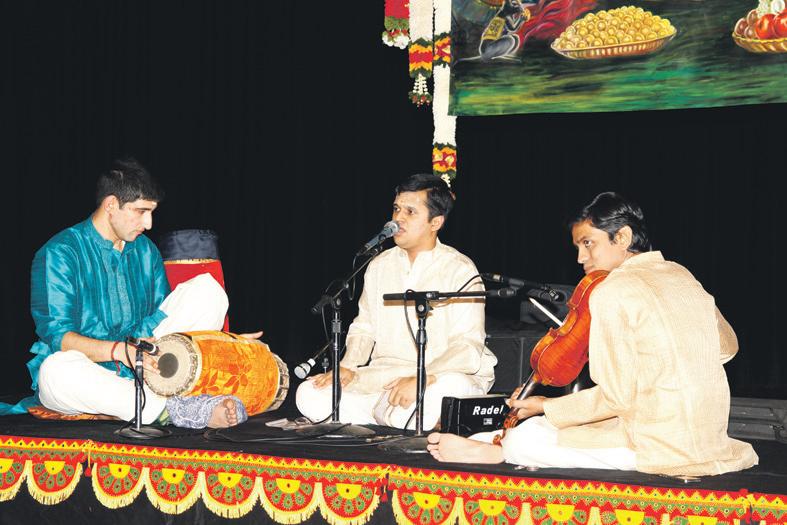
Saketharaman began with a varnam in
raga saveri and set the bar quite high from the outset; that he could take a well-worn varnam like this one and tweak it to give it that freshness and originality, is a mark of a great musician. This was followed by the well-known kriti Vallabha by Dikshitar in raga Begada, and a Tyagaraja kriti in Pantuvarali raga. They were both delivered with superb skill, and the kalpana swaras, a hallmark of the Lalgudi bani, were in a class of their own. Vignesh ably supported the musicians and his sense of tala was flawless. The centrepiece of the evening was a rendition of the raga karaharapriya, followed by the popular Tyagaraja kriti chakkani raja marga, and concluding with a cascade of kapana swaras. Vignesh gave able percussion support, and the tani (solo mrugangam) that brought up the end of this item showcased his skills splendidly. The concluding items were all well supported on the mrudangam, and Vignesh finished on a triumphant note to what was a wonderful and enjoyable arangetram

18 OCTOBER 2013 www.indianlink.com.au
stage
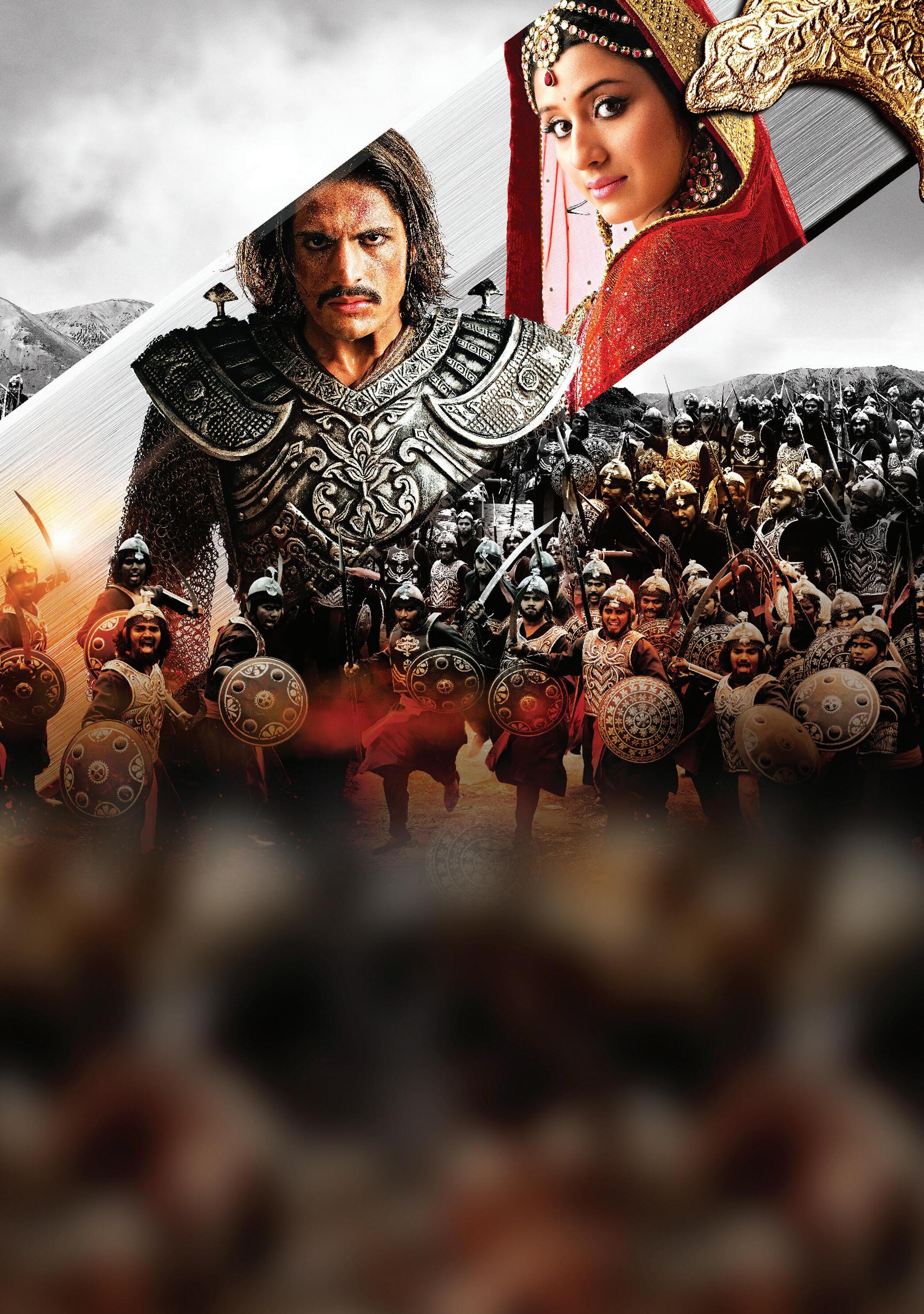


































OCTOBER 2013 19 INDIAN LINK Sun South Indian Pack How to get Fetch TV New cHaNNelS NOw lIVe Taj Mahal Pack what you need Sign up with one of our partners If your broadband is not with one of these providers email contactus@fetchtv.com.au for information on other options Your TV TV aerial (for free-to-air TV) Broadband (internet) FetchTV (box + subscription )
Culture and cakes combine at Thamil Sangam event
Attendees enjoyed a feast of a night, involving a book launch, a film trailer and an array of cakes, all in a single evening
Over 50 renowned intellects from South India attended a special multievent function recently at Menzies Hall in North Dandenong, under the auspices of the VGP Ulaga Thamil Sangam. Also present was Dr VG Santhosam, Chairman of the VGP group of companies based in South India.
The event saw two books launched, both written by Shaantha Jeyaraj. The first was a non-vegetarian international cookbook, and the second was a short storybook titled Tharunangal (Moments).

Next, followed a cultural cake show displaying a variety of different colourful and unique cakes designed with precision and in a variety of themes from village scenes to a portrait of Mother Theresa. There were also
tiered cakes, but the highlight of the show was a portrait of Dr Santhosam made out of icing.

A seven minute trailer of the feature film Ilamei (Youth) was then viewed by the audience. The film was released by Rajsha Productions, a Melbourne-based
production company with a crew of 20 to 30 film and theatre professionals.

Palkalaikkalanjiyem (the Academy of Fine Arts and Home Economics) that had been inaugurated by Shaantha Jeyaraj in 1995 in Perth, and has successfully
functioned for nearly 15 years, was re-inaugurated at the event. The Academy aims to promote Indian culture and tradition among the younger generation living in Australia.
Palkalaikkalanjiyem had been organising an annual variety show
called Kalaicharam (A garland of arts) annually in Perth. Despite the event being held on a weeknight, it was well attended and enjoyed by all. Kudos to Shantha Cakes and Rajsha Productions for an interesting evening.
Falguni Pathak delights fans

The undisputed queen of Dandiya had a spectacular performance at Sportlink in Vermont South recently. Over 2,500 people attended the Dandiya Bash 2013.
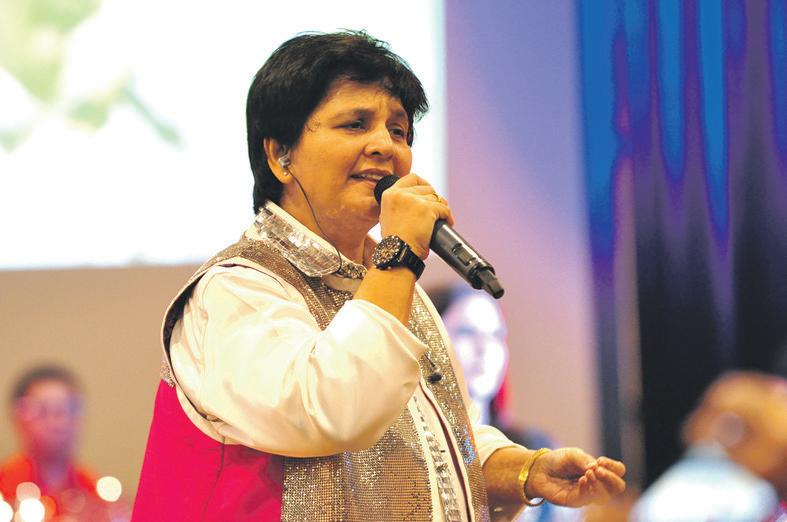
20 OCTOBER 2013
com m unityscene
Photo: Creative Arts Media


OCTOBER 2013 21 INDIAN LINK
Performance of the Year
wins performance of the year
The winners of the prestigious 2013 ART Music Awards in Australia were announced recently, and the Performance of the Year award was won by Chennai-based mrudangam maestro, Guru Kaaraikkudi Mani’s Sruthi Laya Ensemble and members of the Australian Art Orchestra, for their thrilling performance of Sandy Evans’ music recording Meetings at the Table of Time, created in India. This unique work is a coming together of both Western jazz and Carnatic music, and creates a performance of depth and integrity. The winners were announced across 11 national categories and seven state categories at the 2013 ART Music Awards, held recently at a gala function at the Parade Theatre, NIDA in Sydney. Hosted by APRA AMCOS and the Australian Music Centre (AMC), the ART Music Awards are the only national events in Australia to acknowledge the extraordinary achievements and creative successes of Australian composers, performers and educators in the

genres of contemporary art music, jazz and experimental music.
“This award is… most often won by western classical orchestras, so it was a great tribute to Guru Mani and Sruthi Laya that our performance was recognised in this way,” said Sandy Evans. “Of course people in India wouldn’t be surprised by this, but in the Australian context as you well know, it’s quite revolutionary!”
While APRA AMCOS and the AMC congratulate all the 2013 ART Music Awards winners on their outstanding achievements, Australian Carnatic musicians and art lovers of fine arts are extremely proud of this achievement. The far-reaching vision, mutual respect, relentless and innovative pursuits by Sandy Evans and Guru Kaaraikkudi Mani and his team have created this milestone.
This is another record-breaking news of pushing boundaries in music and building bridges between Australian contemporary music and Carnatic music.
Ravi M Ravichandhira

22 OCTOBER 2013 www.indianlink.com.au
music Meetings...
Soulful splendour at RFAK show



The music maestro performed par excellence at his recently held concert in Melbourne

Mind-blowing, fabulous, mesmerising, soul stirring, sizzling, the adjectives were flowing fast on Facebook and for once, everyone seemed to agree that the Rahat Fateh Ali Khan show held in Melbourne recently, was worth every dollar spent. As an ardent fan of Rahat claimed on her status, “I have been to all the RFAK’s concerts in Melbourne and this Rahat Reloaded show was by far the best!” The credit goes to the organisers Sizzlin Events, for not cutting corners with the choice of venue, backdrop or sound.
The recently redeveloped Hamer Hall at the Arts Centre in Melbourne was a fitting location for a power-packed performance from the King of Sufi music, while the backdrop of blossoming flowers and a myriad of lighting effects added to the overall experience. The turnout was impressive for a Sunday evening, as the talented singer from Pakistan took soulful music beyond borders, following the tradition of his uncle late Ustad
Popular Pakistani actress and PTV personality Ayesha Sana ushered the maestro and his troupe on to the stage to the delight of the audience who were getting impatient with the delay. A slickly edited audio-visual clip offered a glimpse of RFAK’s musical journey from the early age of three along with snippets of his multiple concerts around the globe.
Once his accompanists, clad in brown and white traditional outfits, settled in behind him, the iconic singer launched straight into a devotional qawwali, Allah Hu. This was followed in rapid
succession by many of his popular Bollywood songs including Surilli Ankhiyon wale (Veer), Sajdaa (My Name is Khan), Tere Naina Dagabaaz (Dabangg 2), O Re Piya (Aaja Nachle), Tere mast mast do nain (Dabangg 1) and Dam Mastqalandar. The pace did not drop at any stage, nor did the power of his vocal mastery, as the singer belted out song after song with no preliminaries. His interaction with the audience was mainly through his music, lyrics and song. RFAK’s accompanists, many of whom had also performed with Ustad Nusrat Fateh Ali Khan, supported him with equal fervour, helping him to carry the legacy and tradition of a
The turnout was impressive for a Sunday evening, as the talented singer from Pakistan took soulful music beyond borders, following the tradition of his uncle late Ustad Nusrat Fateh Ali
great musical family.
The evening held its magic right up to the last few songs where RFAK launched into full serenade mode with Teri Ore from Singh is King. This particular song could have been toned down to retain the essence of romance, but ended up sounding like a softer qawwali or at best a raspy ghazal. Try as I did, even with my eyes closed, I failed to be transported to the gondolas of Venice skimming smoothly through the river and being serenaded by the gondolier, albeit in Hindi/Urdu. The recorded version proved far more melodic than the live rendition.
The concert went on till later
than expected, but no-one seemed to be overly concerned. Towards the end of the show a raffle was drawn, giving the winner a trip to Agra in India, and all the sponsors were dutifully acknowledged. They included Bank Of Queensland Clayton, Landmark Investments, Aria Hotels, Metropol, KBros and Divine Vibes. The Rahat Reloaded 2013 concert proved to be an entertaining event organised with style and substance.
OCTOBER 2013 23 INDIAN LINK
Nusrat Fateh Ali.
MUSIC
PREETI JABBAL
• Reliable Service and Privacy Guaranteed • Over 25 lenders to choose from • Commercial finance Health check for existing Home Loan “I used to think that all mortgage brokers are the same.... until I met Swati” – Komal Over 18 years of experience in finance industry. Talk to a qualified professional. Dandenong and Springvale Call Swati Palsule on 0411 78 28 18 Authorised Credit Representative 400349 of BLSAA Pty. Ltd. (Australian Credit Licence No.391237) Talk to a specialist for all your Home Loan needs There is no subs T i T u T e for experience. swati@buyerschoice.com.au
Muzaffarnagar riots and social media misuse
Prime Minister Manmohan Singh recently stressed the responsibility of states to deal promptly and strictly with sectarian violence and the need to check social media’s misuse to foment trouble.
Addressing the National Integration Council (NIC) meeting in New Delhi in the aftermath of communal violence in Muzaffarnagar, Uttar Pradesh that claimed 50 lives, the Prime Minister said one should try not to politicise communal riots, but act against those inciting communal violence, no matter how powerful they are.
“The government should use their full force to act against those responsible for riots, however powerful they may be and to whichever party they may belong,” he said.
The NIC later passed a resolution to that effect.
Home Minister Sushilkumar Shinde said the government would soon bring in an anti-communal violence bill.
The NIC meeting saw several chief ministers raise concerns over the misuse of social media to spread hatred and rumours.
The meeting was marked by a walkout by Telugu Desam Party chief N. Chandrababu Naidu in protest against the move to bifurcate Andhra Pradesh.
A number of Bharatiya Janata Party (BJP) ruled states’ chief ministers, including the party’s prime ministerial candidate and Gujarat Chief Minister Narendra Modi, did not attend the meeting.
“Modi should have come,” said Shinde.
The others from the BJP who did not attend the meeting were Chhattisgarh Chief Minister Raman Singh and Goa Chief Minister Manohar Parrikar.
Tamil Nadu Chief Minister J. Jayalalithaa, who attacked her Uttar Pradesh counterpart Akhilesh Yadav over the Muzaffarnagar violence, also did not attend the meeting. Her speech was read out by a state minister. West Bengal Chief Minister Mamata Banerjee and Naveen Patnaik of Odisha were also not present.
Referring to the fake video that was allegedly used to fan the Muzaffarnagar riots, the prime minister said, “We must find
a way to stop the misuse of social media”.
“We cannot let anti-national forces misuse social media. Social media is about expressing opinions freely and we need to maintain that sense of freedom”.
He said that last year the social media was used to cause panic by threatening violence against people of the northeast.
“We are eager to ban social media but it is not easy,” said Shinde.
The prime minister appealed to the political parties not to politicise the issue of riots.
“It is important to ensure that the local administration not only acts swiftly to prevent incidents from taking bigger shape but ensures punishment to the guilty at the earliest,” he said.

He added that anti-national forces were using minor incidents for communal disharmony. “We are determined to control these forces. States need to take prompt action to control small incidents that could flare up”.
The Prime Minister also raised the issue of rising crimes against women and said that changing the laws was not sufficient. Social change is the need of the hour.
“A nation can progress only when women can go to public places without fear. It is a shame that women are not treated properly”.
Uttar Pradesh Chief Minister Akhilesh Yadav, Maharashtra’s Prithviraj Chavan, Assam’s Tarun Gogoi, Haryana’s Bhupinder Singh Hooda and Meghalaya’s Mukul Sangma were among those who raised concerns over misuse of social media.
Shinde said no society could progress without respecting women.
The meeting also saw senior BJP leader L.K. Advani and Bihar Chief Minister Nitish Kumar greet each other cordially.
This was the first meeting between the two leaders since the Janata Dal-United broke off from the BJP-led National Democratic Alliance.
The meeting was attended by Congress president Sonia Gandhi, Finance Minister P. Chidambaram, Leaders of Opposition in Lok Sabha and Rajya Sabha Sushma Swaraj and Arun Jaitley and several union ministers
and NIC members.
Akhilesh Yadav alleged that some political parties were behind the Muzaffarnagar violence.
“It looks that in view of the 2014 Lok Sabha elections, some prominent political parties are making dangerous efforts to mislead the public and spoil communal harmony,” Yadav said.
Rashtriya Janata Dal leader Lalu Prasad told the media that, “fascist and communal forces want to engineer riots on a big scale” with an eye to the general elections.
Madhya Pradesh Chief Minister Shivraj Singh Chouhan said that NIC meetings should be held every year. The last NIC meeting was held in 2011.
Indian Navy gets Hawk trainer from HAL
State-run defence behemoth Hindustan Aeronautics Ltd (HAL) recently handed over the first naval variant of the advanced jet trainer (AJT) Hawk Mk-132 to the Indian Navy in Bangalore.
“We built the aircraft in time for delivery to the navy, which has placed order for 17 AJTs variants. Four more trainers will be delivered during this fiscal,” HAL Chairman R.K. Tyagi said on the occasion.
The city-based HAL manufactures the supersonic AJT under licensed production with the British BAE Systems and RollsRoyce for the Indian Air Force (IAF) and the Indian Navy.
“The Hawk will have a pride of place in our fleet,” Vice Admiral Pradeep K. Chatterjee said while receiving the trainer.
“In view of our long association with HAL, we will think of reviving past projects”.
HAL had in the past supplied Dornier aircraft, Advanced Light Helicopter (ALH), Chetak and Cheetah choppers to the navy over the decades.
The company also upgraded the navy’s Sea Harrier aircraft.
As the twin-seater multi-purpose jet, powered by a single Rolls Royce Adour Mk.871 engine, the Hawk is used for basic, advanced and weapons training of pilots and can perform a range of aerobatic manoeuvres.
The Hawk also has capabilities to be used as a ground attack aircraft or for air defence.
With excellent flying characteristics and stability, the trainer can also be flown at night and can perform a wide range of aerobatic manoeuvres. The aircraft can remarkably accommodate a wide variety of external stores.
The trainer’s ergonomically built cockpit provides an excellent field of view for both pilots, while its instructor’s station in the rear has an override control of vital functions.
The IAF had ordered 121 AJTs, including 24 in fly-away condition, with the remaining being built at HAL’s complex in Bangalore.
The IAF has located the Hawkfleet at its Bidar base in northern Karnataka, to train its rookie pilots for flying the supersonic fighters such as Sukhois, MiGs, Mirages and Jaguars.
Indian, Chinese firms
ink 15 MoUs
Indian and Chinese companies recently signed 15 Memoranda of Understanding (MoUs) worth $338 million which are expected to address to an extent India’s large trade deficit with China.
The MoUs on Chinese companies sourcing from India were signed at the India-China Business Matchmaking Symposium in New Delhi, organised jointly by the Confederation of Indian Industry and China’s Trade Development Bureau, that saw the participation of 50 firms from China.
India’s exports to China in 2012-13 were worth $13.53 billion, while imports stood at $52.24 billion. The trade deficit was therefore about $39 billion.
“What is worrying for the government and Indian industry is that we have a very large trade deficit. So, we need to collaborate with each other because uneven trade like this is not sustainable in the long run,” Asit Tripathy, joint secretary in India’s commerce ministry, said on the occasion.
He said there are tax and market access related issues in China while exporting.
“I am sure that in the coming days we will handle it so that trade can grow,” he said, adding Indian products are “excellent” in quality and quite competitive in the world market.
Tripathy also asked the Chinese business delegation to explore business opportunities in the Indian services sector.
“India is world leader in IT and ITeS, while legal, architectural and consultancy services are also very popular and competitive,” he said. “The delegation may also look at the services sector in India”.
The leader of the Chinese delegation, Trade Development Bureau Vice Director General Jia Guoyong, said that his government was taking all steps to increase imports from India.
“We have a long-term strategy to enhance trade with India. We are optimising imports of hi-tech equipment, simplifying import management and reducing tariffs to facilitate imports. We are also encouraging business delegation visit for import promotion and overseas procurement,” Guoyong said.
Speaking earlier Wang Hejun, commercial counsellor at the Chinese embassy here, said China’s government had introduced the South Asian Expo in the country’s Kunming province upgrading the earlier commodities fair, so as to better
24 OCTOBER 2013 www.indianlink.com.au i ND i AN NEWs
A watery end for the beloved elephant-headed Hindu god Ganesha marks the conclusion of the Ganesh Chaturthi festival celebrations in Hyderabad, Sept. 14, 2013. The festival is celebrated to mark the birth of Ganesha, the Hindu god of wisdom, prosperity and good fortune
promote Indian products.
Over 80 representatives of 60 Indian companies participated in the symposium.
120 violations of ceasefire by Pakistan this year
Pakistani troops have violated ceasefire on the Line of Control (LoC) in Jammu and Kashmir over 120 times so far this year, army sources said recently in Jammu, adding that 98 of the LoC violations occurred in the Jammu region alone.
“Up to September 17, Pakistan troops have violated the ceasefire 96 times on the Line of Control (LoC) south of Pir Panjal Mountains in Jammu region this year. Two more violations were made by them in Poonch and Rajouri districts on September 21 and September 22, taking the total number of ceasefire violations to 98 from January 2013 till date in Jammu region,” the army source said.
“In 2012, the total number of violations on the LoC by Pakistan in the entire state of Jammu and Kashmir, including the Ladakh region, was 93. And this year, these violations in the entire state have been more than 120,” defence sources stated.
Indian troops have been responding with caution to Pakistan small arms and automatics firing at Indian positions. India has been accusing Pakistan of frequent violations of the bilateral ceasefire agreement signed by the two nuclearpowered South Asian neighbours in November 2003.
A modicum of normalcy had returned to the lives of thousands of people living close to the LoC in divided Kashmir over the past decade, which is now frequently disturbed. The LOC is the de facto border between India and Pakistan in divided Kashmir.
Residents of areas along the LoC, especially in Rajouri and Poonch districts of Jammu region, have started shifting their families to safer areas, fearing damage to lives, crops, livestock and properties.
Whopping $401,000 for Bhupen Khakhar’s work at auction
Artist Bhupen Khakhar’s American Survey Officer fetched $401,000 at Sotheby’s Modern and Contemporary South Asian Art sale recently.
A private Indian collector bought Sayed Haider Raza’s La Forge for $305,000 while an Untitled painting by late M.F. Husain went for $245,000 in the auction.
Khakhar’s work was being auctioned for the first time. A private collector gave it to the auction house and it is from the artist’s early days.
This work defines a critical moment in his career as he developed a local and idiosyncratic language for pop art in India.
“We saw strong prices for high calibre works by senior modern artists, including Khakhar, Husain and Francis Newton Souza, reinforcing the quest for quality in the field,” said Priyanka Mathew, head of Sotheby’s sales of Modern and Contemporary South Asian Art in New York, in a statement.
“Khakhar’s work sold for almost double the pre-sale estimate,” she added.
Rare bust of Rammohun Roy unveiled in Britain
A previously unknown ivory portrait bust of Indian social reformer Rammohun Roy was unveiled by an art historian at the
i ND i AN NEWs
Arnos Vale Cemetery in Bristol, UK at a commemoration event to mark the 180th anniversary of his death September 27, 1833.
Every year, this south-west English town holds a commemoration event to mark the anniversary of Roy’s death in Arnos Vale, where his remains were interred in an Indian-style tomb built by Dwarkanath Tagore in 1843.
Describing the ivory bust, art historian David Wilson Sunday said it was made in 1832 by the noted nineteenth century English ivory carver, Benjamin Cheverton (1796-1876).
The ivory bust is a replica of a bigger bust by noted English sculptor George Clarke (1796-1842), for whom Roy sat for in London. Roy arrived in Liverpool in April 1831 and died in Bristol in 1833.
“Rammohun Roy had a dislike of portraits and personal adulation, but agreed to sit to the sculptor as a favour to Basil Montagu, whose own bust had earlier been carved by Clarke,” Wilson said. “Montagu was a friend of Rammohun Roy, and held literary soirees at his house in Bedford Square, very near to the house of the Hare bothers at which Rammohun Roy lived while in London”.
Wilson said that details about the ivory bust were traced after nearly six months of research after he was approached by the owner who wanted to remain anonymous.
The owner also consulted local historian Carla Contractor, who has led the commemoration event in the Arnos Vale cemetery for the last 25 years. She described the ivory bust as “magnificent, absolutely beautiful”.
It is considered as the best and most accurate three-dimensional likeness of Rammohun Roy.
Clarke’s bust of Rammohun Roy is said to be missing, but a life-size plaster cast replica of the bust made by Clarke, since damaged and painted white to resemble marble, is in the library of the Sadharan Brahmo Samaj in Kolkata, the gift in 1936 of a descendant of Dwarkanath Tagore.
“Rammohun Roy had his features immortalised by one of the greatest artists of the day, George Clarke, and therefore Cheverton’s exact replica in ivory of Clarke’s missing bust is very significant in the iconography of Rammohun Roy,” said Wilson.
“It is the best and most accurate threedimensional likeness of Rammohun Roy in existence, and it is probably the most exotic, interesting and important of all ivory busts made by Cheverton,” he added.
The event was attended by a large gathering that included the Lord Mayor of Bristol, members of the Brahmo Samaj in London and several members of the Indian and Bangladeshi communities in Bristol and other parts of Britain.
A bust depicting Rammohun Roy presented by the former West Bengal chief minister Jyoti Basu in 1995 is placed in the Council house in the city centre. Nearby, a life-size statue of Roy by noted sculptor Niranjan Pradhan was installed in 1997, the 50th anniversary of India’s independence.
IIT Delhi brightens up south Delhi slum
The students of Indian Institute of Technology (IIT)-Delhi will take up the task of illuminating the slums in Munirka, south Delhi through a solar lighting project, an
official statement said recently.
IIT-Delhi is working on the project in collaboration with My Sister Foundation of India, a non-governmental organisation (NGO).
The project titled ‘Liter of Light’ has already provided 55W light to three households in the slums.
“The plastic coke and water bottles are filled with water and suspended from the roof of houses. With the simple concept of refraction of light from denser to rarer medium, the light is generated through the light from the sun,” said Revant Soni, a student working on the project.
In the slums, shanties are so close to each other that hardly any sunlight reaches there, forcing dwellers to keep the lights on, even in daytime.
With these bottles, the electricity consumption will be cut down. The project has been put into implementation following the research undertaken for three months.
“The first three installations were done by the students, but now we have explained the procedure of installation to the community members and they would be completing the project,” added Soni.
Around 25 students, including volunteers
of IIT-Delhi, have worked for the development of the project.
Dhoni’s
new hairstyle a rage among fans
India skipper Mahendra Singh Dhoni’s new mohawk hairstyle has become a rage among his fans in the cricketer’s hometown of Ranchi.
From sporting long locks to the latest buzz cut, the Chennai Super Kings skipper has been adventurous with his hairstyles. He revealed his new hairstyle when he took off his helmet while wicket keeping against the Titans at the JSCA International Stadium Complex in Ranchi recently.
The new look reminded the fans of soccer stars David Beckham and Mario Balotelli. When Dhoni made his international debut he had long locks, which were also praised by former Pakistani president Parvez Musharraf.

Sources said that it was celebrity hair stylist Sapna Bhavnani, who was a contestant in the sixth season of Big Boss, who gave the new cut to Dhoni.
“Dhoni is Dhoni and he looks great whatever hair style he keeps,” said Amrit Raj, a die-hard Dhoni fan. IANS
OCTOBER 2013 25 INDIAN LINK
Indian-origin Nina Davuluri remains dignified and graceful in the face of criticism for being an Indian-origin winner of the Miss America beauty pageant, Sept. 15, 2013, in Atlantic City, N.J
in the bag!
Indian Link brings home more honours in this month’s Multicultural Media Awards
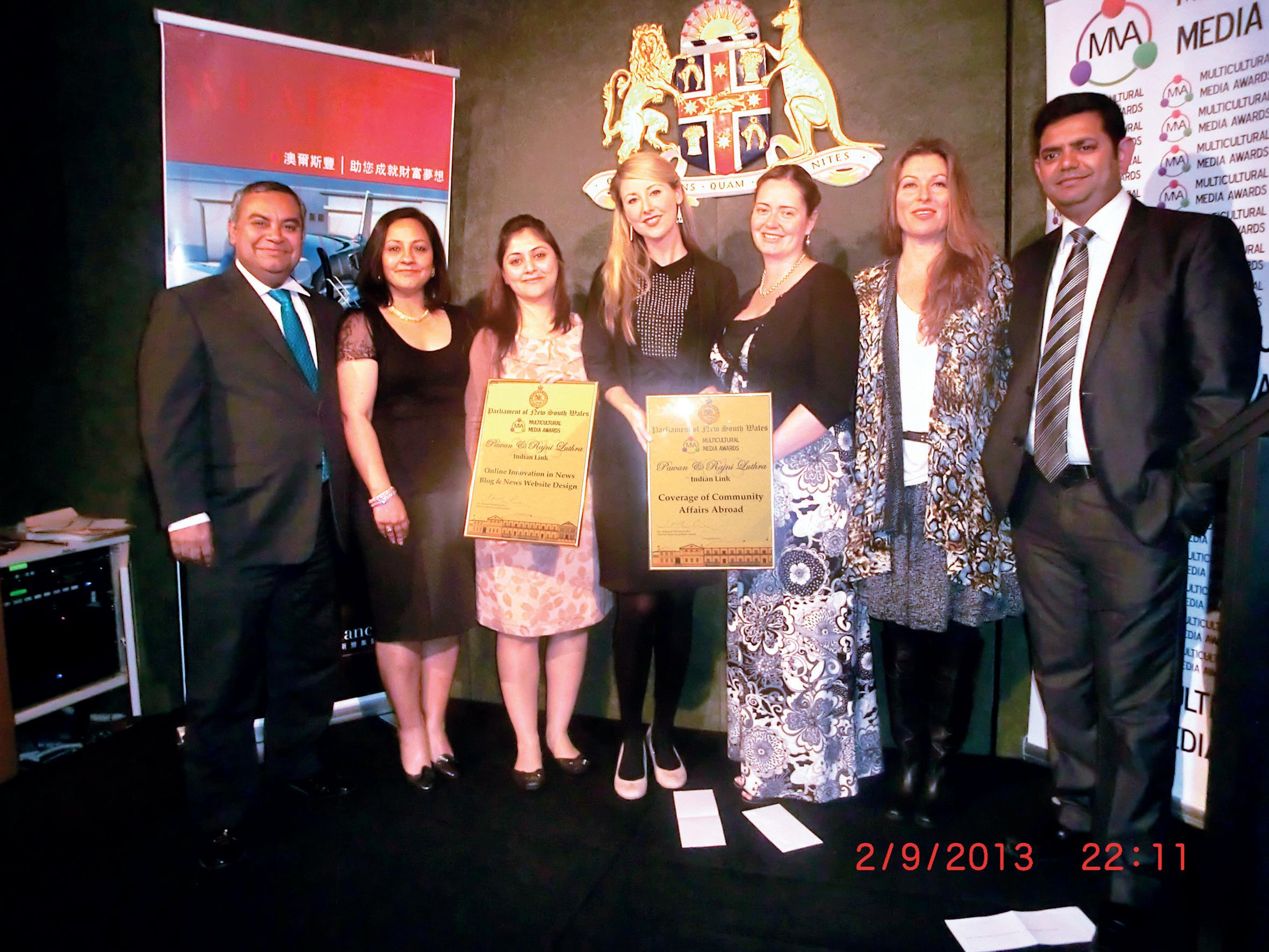 By LENA PEACOCK
By LENA PEACOCK
Indian Link has done it again!
They added two new awards to their growing portfolio of media honours at the recently held 2nd Multicultural Media Awards (MMA). They took out the awards for Coverage of Community Affairs Abroad and Online Innovation in News Blog or News Website Design at the presentation dinner held on Monday September 2, at NSW Parliament House. These awards have been added to their portfolio of accolades, including ones from the 2011 NSW Premier’s Subcontinent Community Awards, 2012 Parliament of NSW Multicultural Media Awards and 2013 NSW Premier’s Multicultural Media Awards. It has certainly been a busy few years for the media group.
“It is indeed heartening to see Indian Link being appreciated not only within the community but now in the mainstream, and so consistently,” Pawan Luthra, CEO of Indian Link, said.
“Multicultural journalists bring communities together and break down social and cultural barriers,” said the Chair of MMA, Shaoquett Moselmane MLC, during his speech. “They inform, they inspire and they involve and they turn challenges into opportunities. Ethnic media is not just a mass communication medium; it is a personal, social, cultural and emotional tool as it combines the voices of many”. Moselmane personally congratulated Indian Link on winning a stack of awards two years in a row, as he posed for photographs with the Indian Link team.
“Of course these latest awards, like our previous awards, belong equally to all of our 70-odd

contributors across the country,” said Rajni Anand Luthra, Indian Link’s Editor-in-Chief. “Their work for us is driven by nothing more than a passion for telling the people’s stories, in a fair and objective manner, and is often undertaken over and above their own day job and family responsibilities. Pawan and I salute their efforts in helping us reach this level”.
Rajni also had a special word for the core team that works within the office at Indian Link. “The marketing staff, Vivek Trivedi, Nitika Sondhi Verma and Ashish Chawla; human resources manager Antoinette Mullins, assistant editor Lena Peacock, designer Danielle Cairis and contributing editors Sheryl Dixit and Preeti Jabbal, together oversee the work of the contributors on the paper as well as the radio arm of the company, and make sure a quality product goes out every fortnight in print and daily on air,” she said.
“There is a strong commitment to excellence that I am very proud of, and I congratulate each one of our team members”.
Not including the ones that Indian Link won, the categories included; Multicultural Journalist of the Year, Coverage of Community Affairs in Australia, Cultural Photographer of the Year, Feature writing, News Reporting, Editorial Reporting, Contribution to Social Inclusion and Multiculturalism, Coverage of Indigenous Affairs, Investigative Reporting, Editorial Cartoon (a new category), and Online Coverage of Multicultural Community Affairs.
The Master of Ceremonies of the evening was Yalda Hakim (ex-SBS presenter, and current presenter for BBC London), and the special guests for the evening were Ministers Tony Burke and
Kate Lundy, Indigenous Elder Brian Butler AM from the National Congress of Australia’s First people, Deputy opposition leader Linda Burney, Luke Foley, Amanda Fazio, Greg Donnelly, esteemed consular dignitaries, business and community leaders. It was an interesting time for an event at Parliament House, due to it being held just days before the 2013 Federal Election.
“You have turned challenges into opportunities, and at a time when mainstream print media is struggling, you are not only surviving, but thriving,” Moselmane said on the night, addressing the multicultural media. “Today, you have made multicultural Australia a success by enriching it with your talents, skill, hard work and dedication”.
Moselmane also revealed that until 1955 “the foreign language press, as it was called, was viewed with suspicion, and some thought it served as a hindrance to assimilation rather than help”. Restrictions were imposed by the government, and at least 25% of the text had to be published in the English language. Today, however, thankfully things have changed and the multicultural media are celebrated with their hard work by awards such as this.
Indian Link has certainly grown from the small 24-page black and white newspaper to having full colour monthly editions across Australia, as well as fortnightly Sydney editions, a 24-hour radio station, e-paper, e-newsletters, interactive website, and wide range of social media. Indian Link is not just a media group, it is a forum for the community, with a strong focus on quality and authenticity. It is most definitely seen as a celebration of assimilation and the media group seems to be showing no signs of slowing down.
2013 Mu LTIC u LT u RAL
M E d IA AwAR d wINNERS
Mu LTIC u LT u RAL J O u RNALIST OF T h E yEAR
Gerry Gerogatos, 1. The Stringer 2. The National Indigenous Times
CO v ERAg E OF COMM u NIT y A FFAIRS A BROA d
Pawan and Rajni Anand Luthra, Indian Link
CO v ERAg E OF COMM u NIT y A FFAIRS IN Au STRALIA
Linna Lee, TOP Media

Cu LT u RAL Ph OTO g RAP h ER OF T h E yEAR
Oi Ling Jojo Lee, Sing Tao Daily
F EAT u RE w RITIN g
Helen Velissaris, Neos Kosmos
N E wS R EPORTIN g
Wing Yam Lee, Sing Tao Daily
Ed ITORIAL R EPORTIN g
Patrick Zhu, Oursteps
CONTRIB u TION TO S OCIAL I NCLu SION AN d
Mu LTIC u LT u RALISM
Jan Smith, 3ZZZ Radio
CO v ERAg E OF I N d I g ENO u S A FFAIRS
Gerry Georgatos, The National Indigenous Times
I N v ESTI g ATI v E R EPORTIN g
Gerry Georgatos, The Stringer
Ed ITORIAL C ARTOON
Joel Magpayo, The Philippine Times
ONLINE INNO vATION IN NE wS BLO g OR NE wS w EBSITE d ESI g N
Pawan and Rajni Anand Luthra, Indian Link
O NLINE CO v ERAg E OF Mu LTIC u LT u RAL COMM u NIT y A FFAIRS
Steve Giannakouras, www.greekcity.com.au
m ED i A AWA r D s 2013
I N d IAN L INK : CO v ERAg E OF COMM u NIT y A FFAIRS A BROA d
Although the main thrust of reportage in Indian Link is on issues that connect India and Australia, substantial effort is also devoted to coverage of major issues in India. Every edition of Indian Link features news from India, as well as pieces on India’s literature and cinema. These regular columns keep the Indian community in Australia abreast of movements in India in all areas of endeavour.
With the Indian Link Sydney edition being the only English language paper for the Indian community being printed fortnightly in Australia, the regularity of these features are an important source of information for many Indians living here.
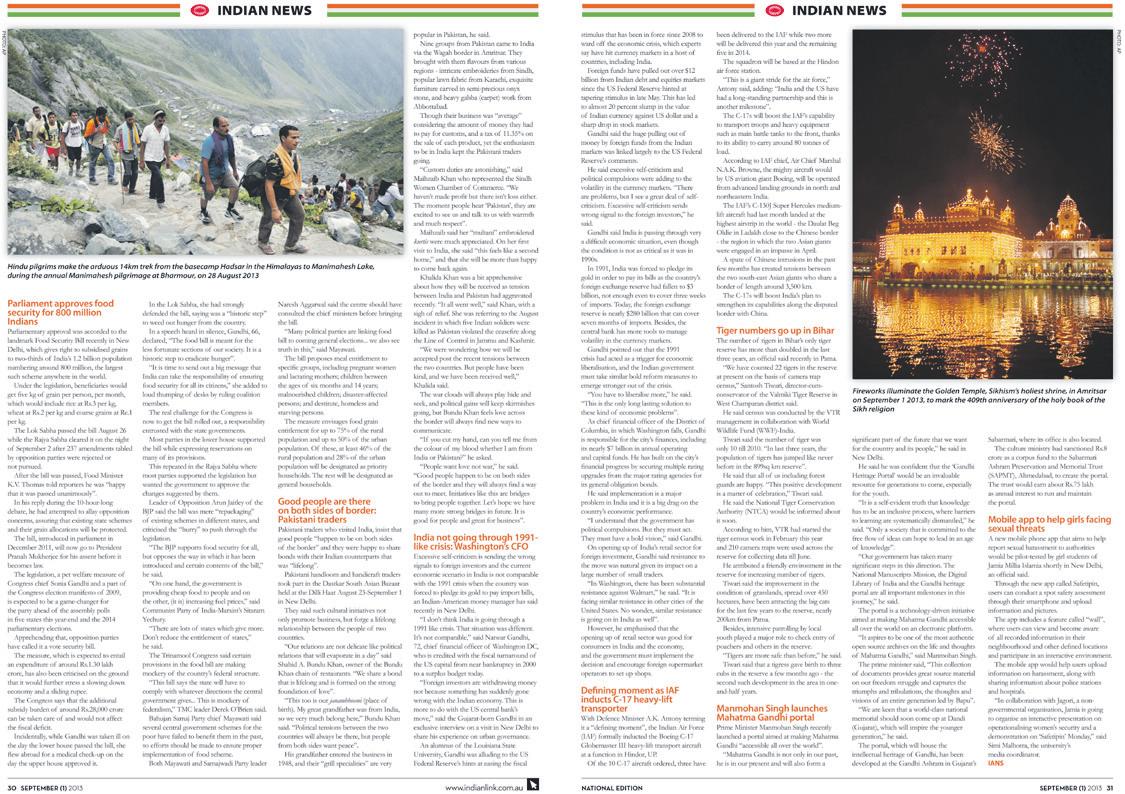

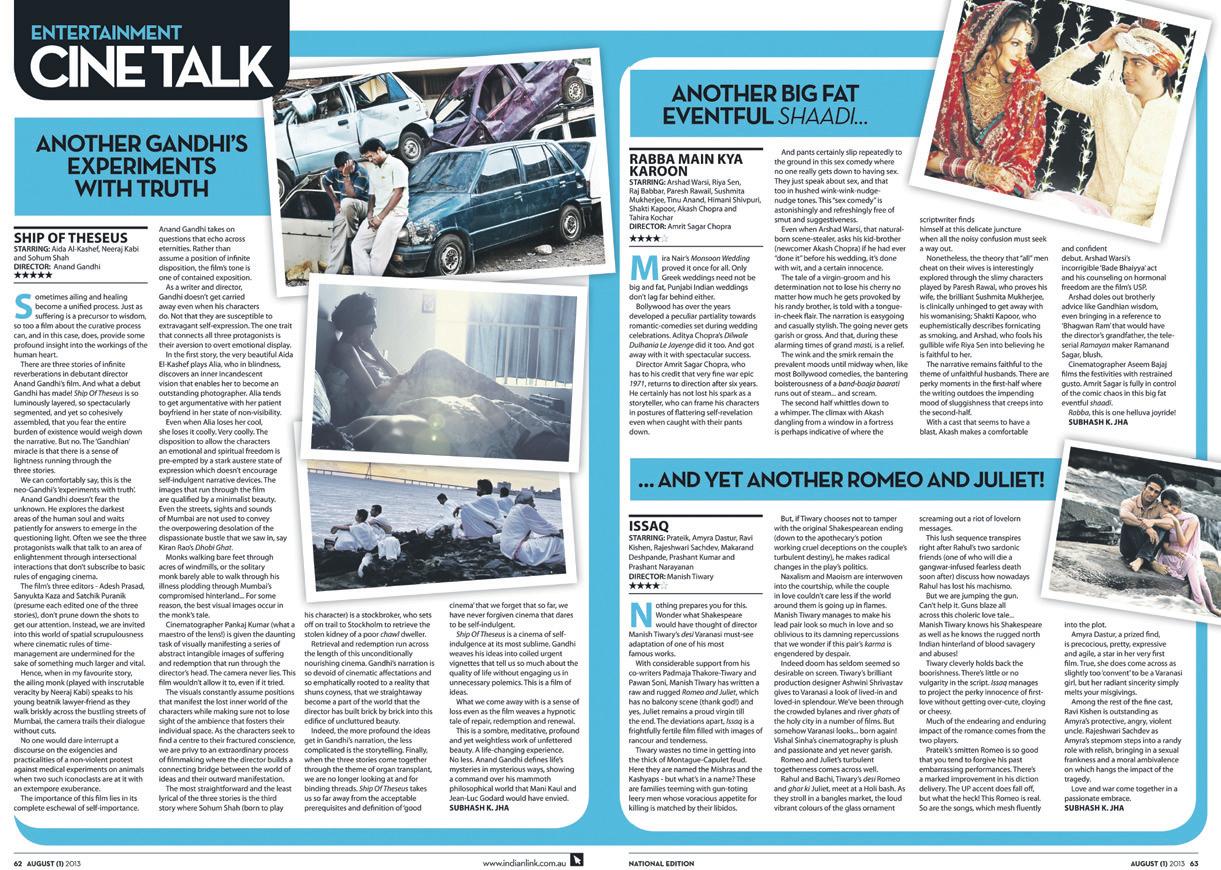

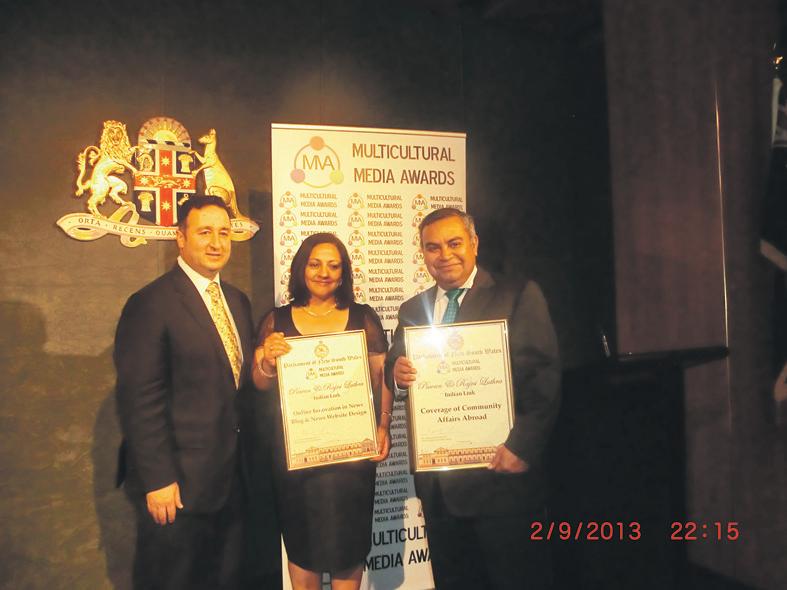
I N d IAN L INK : O NLINE I NNO vATION IN N E w S B LO g OR N E w S wEBSITE dESI g N

The Indian Link Media Group has embraced technology since starting in 1994 and has remained one step ahead. They recently launched their newly designed website www.indianlink.com.au, and have increased their online and social media presence. With enhanced functionality and a stylish, contemporary design, the website uses innovative technology. With full social media integration, Indian Link is able to interact with their readers like never before. The website is now available across all platforms, including smart phones, tablets and other devices, for information on the go. It links the newspaper (through the e-paper), 24/7 radio (which can be listened to online or through an app) and online content (linking in to social media and e-newsletters).
 Indian Link team (from left) Pawan Luthra, Rajni Anand Luthra, Nitika Sondhi, Lena Peacock, Antoinette Mullins, Danielle Cairis and Vivek Trivedi
Shaoquett Mosselmane with Rajni Anand Luthra and Pawan Luthra
Indian Link team (from left) Pawan Luthra, Rajni Anand Luthra, Nitika Sondhi, Lena Peacock, Antoinette Mullins, Danielle Cairis and Vivek Trivedi
Shaoquett Mosselmane with Rajni Anand Luthra and Pawan Luthra


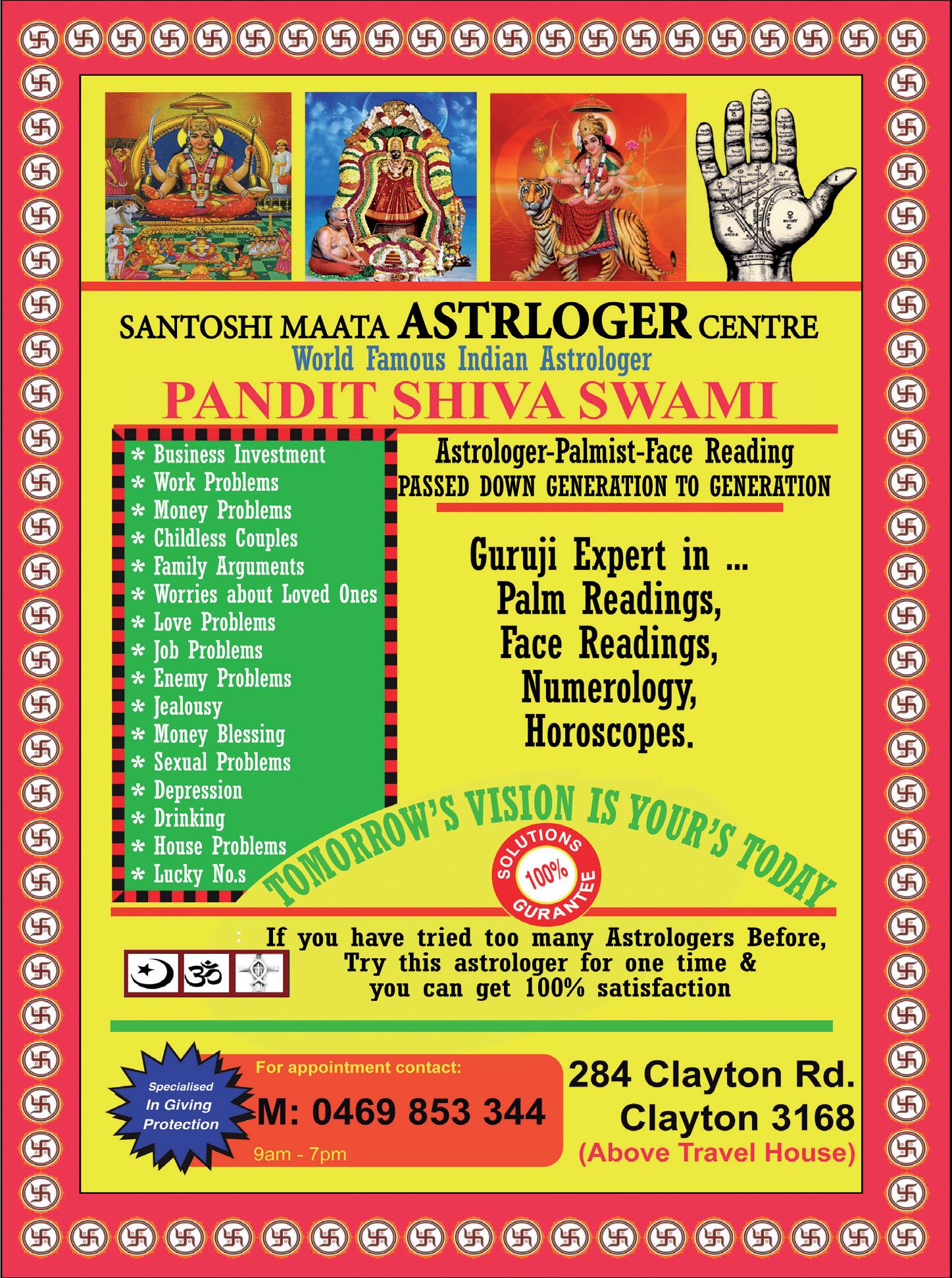
28 OCTOBER 2013 www.indianlink.com.au

OCTOBER 2013 29 INDIAN LINK





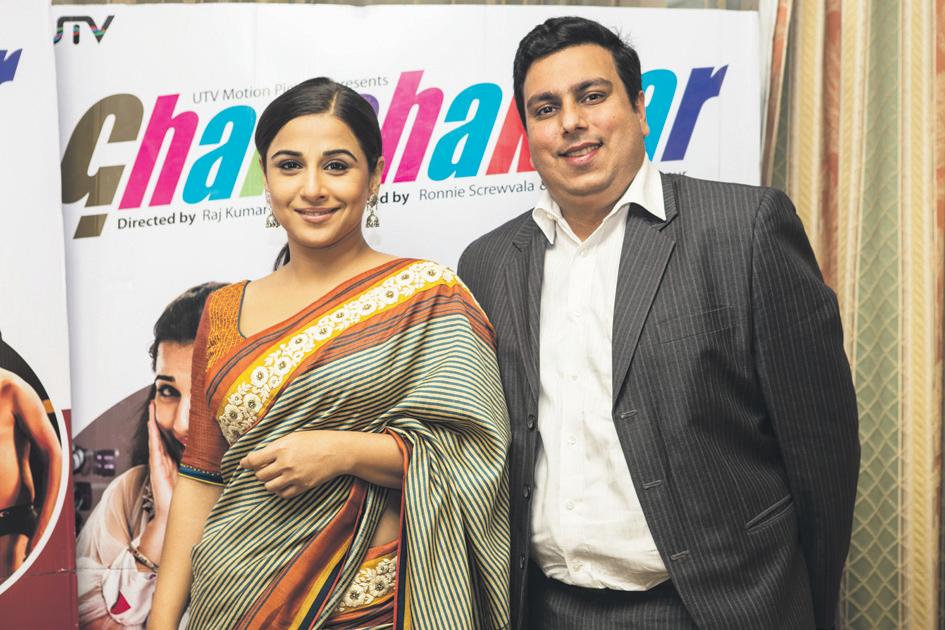
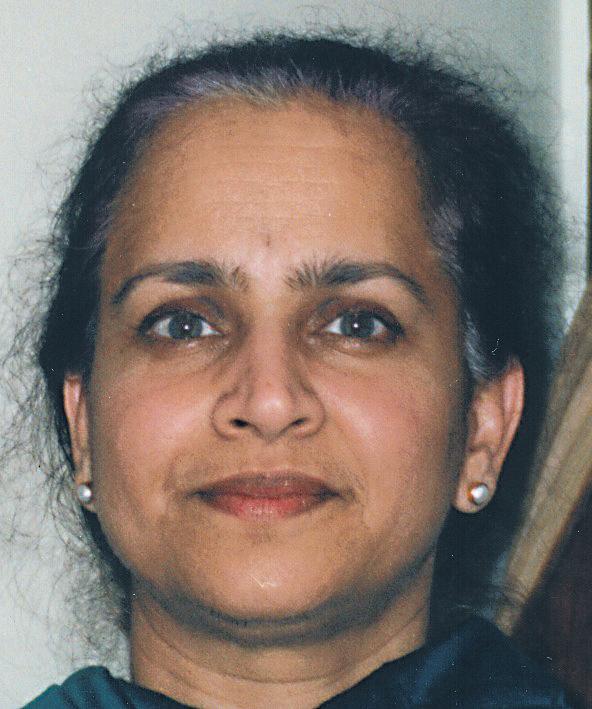

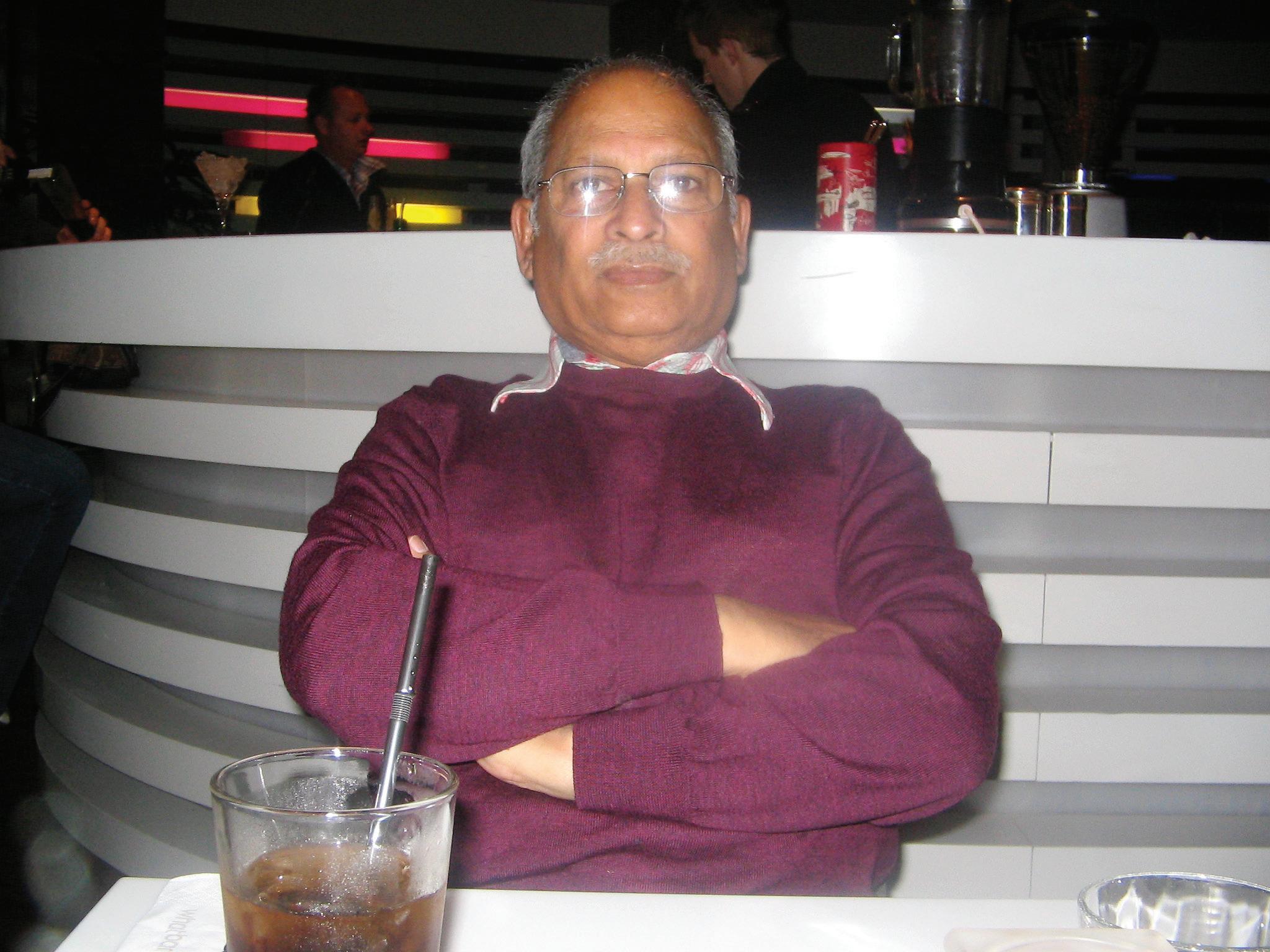

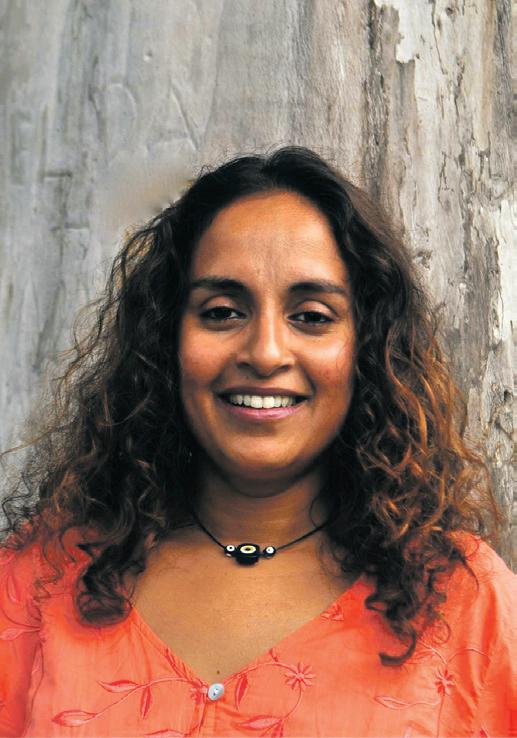



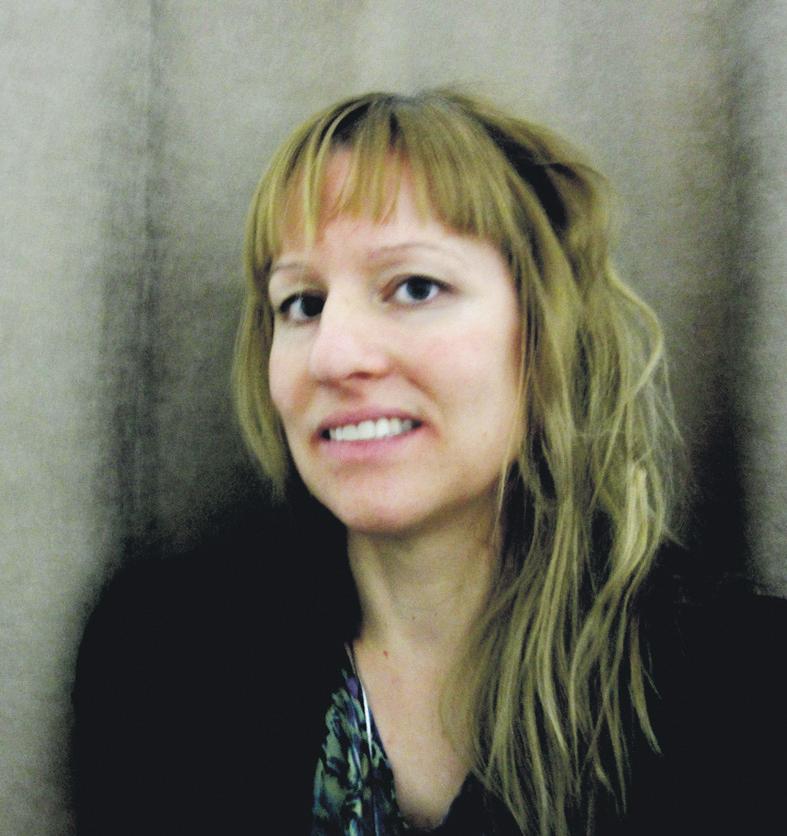
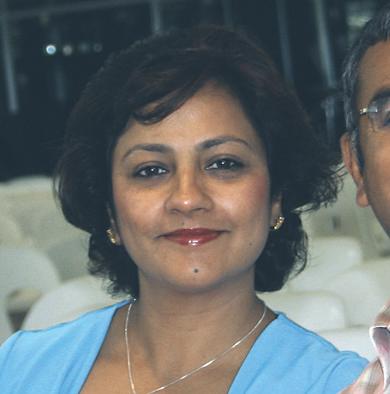
30 OCTOBER 2013 Indian Link Melbourne Serving the Melbourne Indian community since July 2001 Largest circulated CAB audited Indian publication in Victoria indianlink.com.au • Melbourne Monthly Newspaper Winner of 3 Premier’s Multicultural Media Awards 2013 Winner of 3 NSW Parliament Multicultural Media Awards 2012 Winner of NSW Premier’s Multicultural Community Award for Harmony 2011 Proud member of: Mob: 0423 242 522 Tel: 1800 015 847 Melb@indianlink.com.au Mob: 0468 389 272 Tel: 1800 015 847 client@indianlink.com.au Ashish Chawla Sales and Marketing Manager – VIC Preeti Jabbal Melbourne Coordinator George
Tim
Leanne
Lena
Thakur Chitra Sudarshan
Blight Kudrat Singh
Woodward Sukrit Sabhlok
Peacock Pawan Luthra Sheryl Dixit Rajni Anand Luthra
People power leads to split result

but effective way of getting one’s message across. Strangely, the Labor Party did not use a similar strategy.
By NOEL g dE SOuZA
The 2013 elections in Australia have resulted in a ‘people power’ change, given the widespread support that those standing for a new government received. It was done through the ballot box and an individual’s right to vote. That meant that aspiring politicians had to play by the rules of the established system. This has been best demonstrated by the motley collection of minor parties in the Senate. The Labor Party lost the election by 3.5%; in contrast, when Howard got elected in 1996 it had lost by 5.8%.
‘People Power’ can manifest in different ways. In 1986, President Marcos of the Philippines was overthrown by sustained demonstrations (said to be by up to two million people) with the support of the army and the Catholic Church. These latter organisations had once supported him during his long reign which was marked by corruption and disregard for the rule of law. The demonstrations ended with the installation of President Corazon Aquino, whose husband Benigno Aquino was gunned down at the Manila airport when his plane touched down after a well-publicised return to challenge Marcos. That was the last straw in the patience of the people.
In the last few years, there was an attempt to emulate a similar strategy in New Delhi. There were demonstrations centred around the figure of Anna Hazare, a supposedly devout and honest man. The claim that Hazare was a personage above politics and highly moral has been disputed and put to rest.
Changing a government through mob agitation can be interpreted as undemocratic, if democracy and the rule of law still prevails in a country. India is democratic with a wellfunctioning judicial system. Loud shouting and unruliness cannot be allowed to engineer regime change. Subsequent events have vindicated the democratic nature of India.
In Australia there was a hint of the ‘large demonstrations’ strategy when party leaders (mostly Liberal) were photographed with placards behind them. That was a simple
In Australia, for a government to wield close to absolute power, it has to control both the House of Representatives and the Senate. The last few governments did not control the Senate. The Senate is a good place to have allies for a party in opposition, but it becomes troublesome for a party in power. When a party wins power, one often hears talk about reforming the senate. That is a virtual fantasy because that would need a referendum, and Australia is notorious for rejecting referenda.
The Greens have held the balance of power in the Senate till now, but their vote has reduced (by 3.3% to 8.4%) and they will lose that control after mid-2014, because their numbers might be reduced by two senators.
Green Senator Sarah Hanson Young’s vigorous defence of refugees raises the question: Which Australian group was she supporting? Refugees do not have a vote until they become citizens, as until then, they are foreigners. Nevertheless, the Greens keep control of the Senate till the middle of 2014. So till then all controversial legislation such as changing or abolishing the carbon tax, could get blocked.
After mid-2014 a new set of alliances will come into play in the Senate. There are going to be several small parties that need to be wooed to enact promised legislation. The motley collection of parties and individuals includes Palmer’s United, Katter, Pauline Hanson, Motor Car Party and Sex Party.
Palmer has effectively played the Australia card. He joyfully sang to his followers that We are all Meat Pies, meaning thereby that we are Australians independent of foreign influence and having our own symbolism. Palmer’s Party extended its reach even into Tasmania by unexpectedly getting 20,000 votes.

In the UK, there are limits to the power of the Upper House (or the House of Lords) in rejecting bills. Financial bills are approved even though the Upper House may not be happy with the proposed measures. In Australia, like in the USA, full approval by both houses is required.
The Australian people have changed the government, but burdened it with a noncompliant Senate. The change has taken place peacefully and is in stark contrast to the mayhem that characterised Middle Eastern politics at the same time.
OCTOBER 2013 31 INDIAN LINK
opi N io N
In Australia, for a government to wield close to absolute power, it has to control both the House of Representatives and the Senate
The Australian people have changed the government, but burdened it with a non-compliant Senate
While the result of the ruling party in power is clear, the Senate remains a hotbed of clashing objectives
AUSTRALIAN BULLION COMPANY WISHES EVERYONE A HAPPY DIWALI AND A PROSPEROUS NEW YEAR
Testing the tutors
Accreditation for tutors in Australia will ensure better standards of educational accountability

disclosure requirement.
By MOhAN dhALL
One of the most common inquiries to the Australian Tutoring Association (ATA) is what the requirements are for becoming a tutor. It is heartening that many prospective tutors are keen to know what, if any, standards apply in regards to entry into the industry.
The nature of tutoring is such that it straddles two seemingly opposing areas of human endeavour. On the one hand, it is commercial in nature, and therefore commercial rules apply. In the alternative, tutoring is about education and educational accountability. These two; the commercial and the educational, overlap in tutoring in a way that causes a unique set of issues.
Consider the issue of plagiarism, for example.
Plagiarism, in an educational sense, is defined as the passing off of another’s work as one’s own, without authorisation to do so. The educational definition focuses on the nature of the creator of the work and their relationship to that intellectual property. It seeks to ensure that the owner is rewarded for their endeavours, and that personal effort is valued. A commercial view of plagiarism, as it relates to tutoring, would look at the nature of dependency. If a tutor does the work of a student, the student becomes more dependent. In
this context, plagiarism generates income and entrenches weakness in the student. The tutor is the ‘paid help’ actually weakening, rather than strengthening the recipient. Therefore, if the issue of dependence was included in the definition of plagiarism, any problem arising from how commerce affects tutoring could be addressed effectively.
In this example, it can be seen that tutoring creates a particular set of dynamics that present problems for commercial regulators and also educational administrators. However, experience around the world has shown that regulating the private tutoring market can be fraught with difficulties. For example, an outright ban on private tutoring in Egypt failed when the black market for private tutors flourished. Similarly, a proposed ban by the Turkish government has been modified in the light of huge opposition from families and educational advocates.
How then can the growing
domestic and global market for private tutoring be best managed?
The current arrangement in Australia is a model of selfregulation. Self-regulation requires an industry to demonstrate maturity in that the industry itself is prepared to benchmark best practise and to hold practitioners accountable to such standards.
Five features of successful self-regulation
• The presence of a peak representative body
• The creation of a code of ethics or code of conduct by the peak body and applicable to the membership particularly and the industry more broadly. The code should also have a regime for sanctions or penalties than can be imposed on providers who breach it
• The creation of a vehicle for the settlement of disputes arising between practitioners and clients and practitioners themselves
• A form of accreditation that
acts as an entry mechanism and a means by which standards can be set and improved over time
• Recognition by government of the peak body and its standards
To date, the missing piece in Australia, and one which is essential for responsible selfregulation, is that of a viable and rigorous accreditation for tutors. How embarrassing when prospective tutors are told that, “at present in Australia there is no entry criteria other than an operator abide by the relevant commercial and child protection laws”.

Self-regulation demands that each of the five features be present. In Australia four are met, but accreditation is not. So it is time to test the tutors. Disclosure is an essential element of the test. That is, a tutor should be honest and upfront about the exact and specific nature of their skills, experience and qualifications. The term qualified tutor is meaningless without such a
It is time for Australian tutors to embrace an industry-based accreditation. Globally, only two nations have a form of accreditation for tutors: the USA and Germany. The model in the USA is cumbersome and at present a very small proportion of tutors (estimated at less than 0.5%), have become accredited. In Germany the model is based on ISO9000 and is so rigorous and expensive that it has not been embraced by the industry. Only 30 businesses out of 4,000 comply (or 0.75%).
The characteristics of relevant accreditation for Australian tutors should be that content and skills reflect local experience and match the aspirations of a best practice code. Included in such an accreditation should be compulsory national police background checks. This would overcome the present ad hoc situation of a lack of uniform national laws in regards to child protection.
With regards to knowledge, skills and abilities, teachers who tutor should be recognised for their prior knowledge and experience.
Finally, an accreditation should have both core and optional units to ensure minimum levels of qualification, as well as a capacity to specialise. Such a model allows for continuing professional development (CPD).
Tutors need to be put to the test and national standards raised. In this way, children and their families are better respected, and outcomes for tutoring are raised. The industry needs to demonstrate this responsibility and maturity.
For stunning images of your next big event, call Guruswamy on 0406 820 413.

32 OCTOBER 2013 www.indianlink.com.au
school
Now Ap GurusWAmY captures beautiful moments in Melbourne’s Indian community! In his 40-year career experience as
professional
in
Guruswamy covered news, corporate events, large scale events and celebrities.
He captured the magic of Aishwarya Rai when she got back home after winning the Miss World crown in 1994.
a
photographer
India
mr KAlElu
I F S o THEN c A ll KALELu TodAy F o R HE lp N o W o N : 04 69 36 75 12 very rapid results and 100% guarantee
International spiritual healer psychic medium and dream translator Are you having any of these problems: love, relationship, facing divorce, family problems success in business, career, spate of bad luck, personal worries, court cases, impotency, breaking curses, witchcraft and many more...



OCTOBER 2013 33 INDIAN LINK
Uncommon, but healthy
Certain unusual foods that can spruce up your daily diet while adding nutrients to a meal
BY GEETA KHURANA
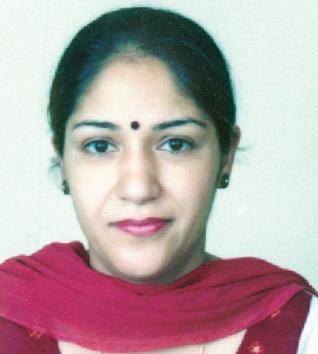
Most of the time we try and stick to our usual regular meals and foods. And especially when we think healthy, only a few foods come to mind. But there are lots of different types of food available that are healthy which also add variety and spice to our meals. Here are some of these uncommon, but healthy kinds of food.
These are young versions of green soybeans that are picked while still attached to their branches. In Japanese they literally mean ‘beans on branches’. These young soybeans are an excellent source of plant protein, antioxidants, iron and fibre. They have a slightly sweet and nutty taste, and can be steamed or cooked in a microwave. They can then be squeezed out of the pod and used as a crunchy snack, or added to soups, stews, casseroles and stirfrys. The beans can be pureed into hummus and enjoyed as a creamy dip if you add garlic, lemon and tahini (sesame paste).
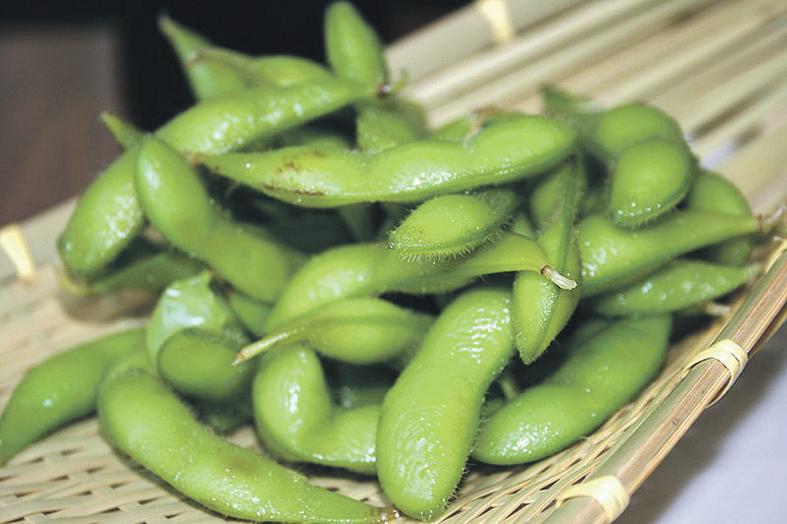
Quinoa is becoming quite popular as a health food these days, and is excellent for people on a gluten free diet. Being a high protein grain it is a very good source of protein for vegans and vegetarians, and a good substitute to white flour. It is also a good source of fibre and has a low GI, which allows long-term satiety. It also contains iron, calcium and magnesium for a healthy nervous system. Quinoa tends to have a slightly nutty flavour and firm texture. It is versatile and can be used instead of rice or added to desserts, stir-frys, puddings and patties. You can even prepare quinoa gluten free pancakes, muffin, breads and cookies. It can be used as a breakfast meal with honey, fruit and nuts, and in salads.
3. Bulgur
Bulgur wheat is a wholewheat grain that has been cracked and partially pre-cooked. It is traditionally used in Middle Eastern cuisine, and is added to tabbouli and pilafs. Bulgur is richer in nutrients and vitamins
than refined, processed wheat, which has been stripped of many beneficial ingredients. Low in fat, high in fibre and rich in minerals, bulgur wheat is a healthy dietary choice.
4. Natto
Natto is a traditional Japanese dish made from soybeans fermented with the bacteria Bacillus Natto, which makes them easier to digest and absorb. It has a strong smell and you need to acquire the taste of eating natto. In Japan, it is a considered an important health food and is often eaten at breakfast with rice and sometimes with mustard, soy sauce, broth, vegetables or a raw egg. Natto has the amount of protein equal to a lot of animal foods, but with fewer calories. Natto also contains vitamin K, which is needed for normal blood clotting and regulation of calcium in the body, keeping it in the bones and out of the arteries. In addition, natto provides vitamin E and vitamin B2, and contains an enzyme called nattokinase, produced during the fermentation process, which is also said to help prevent blood clots.
5. Wheat germ
Wheat germ is the most vitamin and mineral-rich part of the wheat kernel. In fact, the germ is actually the embryo of the wheat plant. But this kernel, which includes the wheat germ, is removed during the refining of wholewheat grains to white flour. Because its healthy oils can go rancid quickly, removing wheat germ helps to store wheat for longer. It is packed with important B vitamins, such as folate, thiamin and vitamin B6, and the minerals zinc, magnesium and manganese. It is also a good source of Vitamin E. You can incorporate wheat germ into casseroles, muffins and pancakes, or sprinkle it over cereal or yogurt. The texture of wheat germ can add a great crunchiness and taste to these foods.
6. Beets
Beets are a good source of both folate and phytonutrient betalains. Betanin and vulgaxanthin are the two best-studied betalains from beets, and both have been shown to provide antioxidant, and antiinflammatory, properties. It is important to have beets raw or
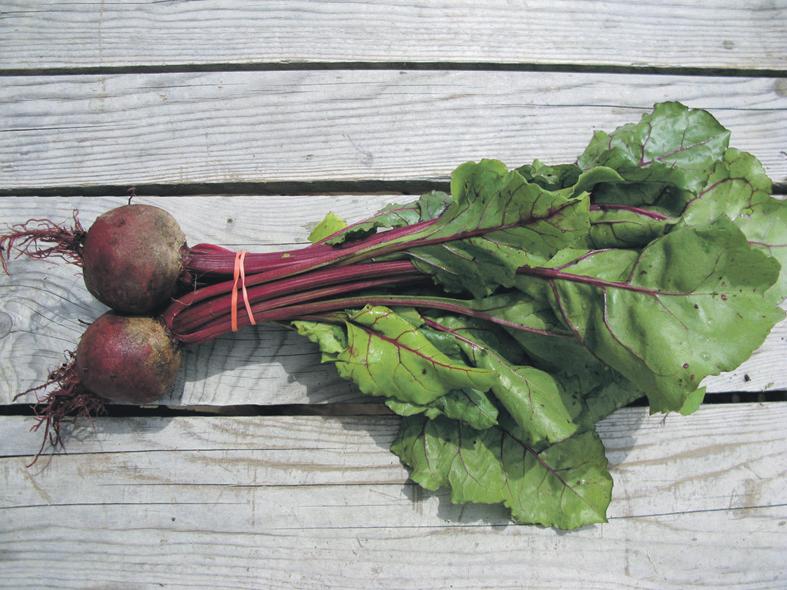
just sautéed with a little lemon juice and olive oil, as they lose nutrients when cooked.
7. Seaweed
Since the last few years, seaweed has become a popular health food, from being included in sushi rolls to snacks.
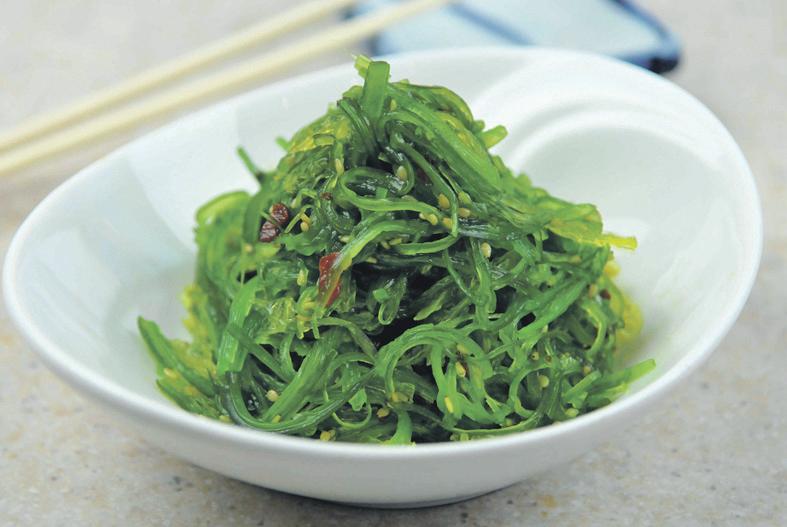
Some of the most popular edible seaweeds include deep green kombu, dried black hijiki, chewy red dulse, emerald wakame, bright, leafy sea lettuce, and dark, toasted nori. Nori, which is a red seaweed that turns black and green when dried, is one of the most prevalent types for snacks. Nori is rich in proteins, fibre, Omega-3 fatty acids and Vitamin C. The wakame variety of seaweed is a good source of calcium and magnesium, and thus prevents osteoporosis. Raw seaweed is normally available at Asian supermarkets and can be cooked with a little olive oil and salt and pepper or added to salads.
Let’s break the habit of eating regular meals and snacks, and try to add these foods which might not be familiar, but are packed with health benefits and nutrition.
Some of the most popular edible seaweeds include deep green kombu, dried black hijiki, chewy red dulse, emerald wakame, bright, leafy sea lettuce, and dark, toasted nori
34 OCTOBER 2013 www.indianlink.com.au
1. Edamame
2. Quinoa
wellness


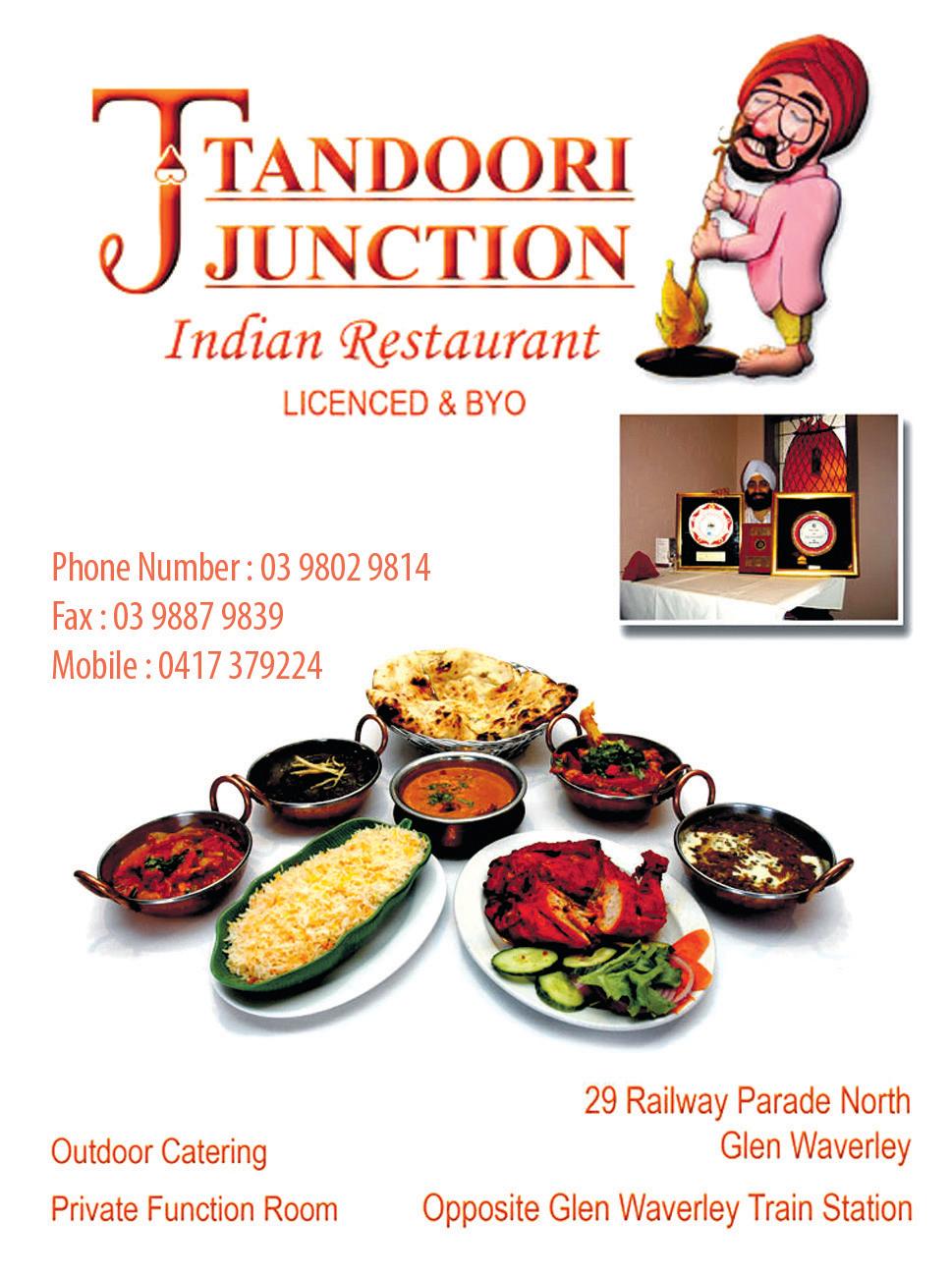
OCTOBER 2013 35 INDIAN LINK
Playing games with the game
Cricket has morphed from a prolonged gentleman’s game to a fast-paced, finance-friendly and techno-savvy sport
made available to the game, but also commercialised within a short span.
By MALLI IyER

Cricket as a game is more than 200 years old and was originally played by British aristocrats who christened it the ‘gentleman’s game’. It presumably never intended to acquire a global following or participation. But the best-laid plans go awry and it comes as no surprise that there were detractors who disliked the narrow limits drawn by the founding fathers of cricket.
Too testing!
In the early 20th century, even George Bernard Shaw could no longer associate himself with this exclusive preserve of the rich and the famous, and decided to call it a sport played by “22 flannelled fools and watched by 22,000 fools with nothing better to do”. Until then, a great number of cricket games ended in a stalemate called a draw, with no winners or losers. Most critics of the game asked what the purpose of the sport was, if a test match ended in a draw after five arduous days of competing. Thanks to the well-known vagaries of the English weather, the game would be frequently suspended because of rain or poor light. None of this endeared the game to the spectators, who took refuge in saloon bars attached to cricket ovals.
In Europe and North America, cricket as a sport did not grow in popularity with Americans developing baseball, their homegrown substitute with similar characteristics. Most people in Europe saw cricket as a tired, dull and lazy pastime which was played over five days of action in slow motion. The British therefore looked to popularise the sport within the Commonwealth, an extension of the Empire, and the game took root in South Africa, Australia and the Asian subcontinent.
Trite terminology
Consider the weird terminology associated with the game: fielding positions like silly mid-off or silly point, long leg, fine leg, square leg, gully, slips and cow corner, have a whiff of their colonial connection. There is little in the above that suggests a competitive angle or an attacking posture. That
Fast and furious
In the new millennium, further innovations have created a hybrid that lasts only 20 overs for the competing sides, requires supreme fitness of players and is supported by latest technology with several different camera angles and a spider cam to boot, that hovers above cricket ovals like a low level satellite. Technology has given new armoury to cricket umpires in the form of snicko, hot spot and the stump cam among others, that enables them to hear even sighs and whispers of those in the field

is, until Douglas Jardine, captain of England invented bodyline in the 1930s, instructing his bowlers to attack the Australian batsmen and aim at their bodies, rather than at the stumps as an intimidating tactic. Bodyline created much more than a storm in a teacup, leaving the Australians aghast. Cricket administrators hastily created laws to prevent intimidating bowling.
ODI emerges

In the 1970s, Australian business tycoon Kerry Packer created a fast and furious rival to test cricket that was short, sharp and guaranteed to produce a winner and a loser. Inevitably the cricket establishment in England was scandalised, and refused to admit the renegade rival any official status. They dubbed Packer’s one-day carnival of cricket as a pyjama game since most of the players and officials were attired in coloured clothing which endorsed commercial sponsors. Packer however, by enlisting leading cricketers, made the game a professional sport overnight. More importantly, with just 50 overs for each side, the game was over within a day or
evening in a floodlit stadium. It has also become very watchable and ensured good gate money for the benefit of players, officials and cricket administrators. The top levels in cricket hierarchy eventually joined the bandwagon. Money power was well and truly
bouncer, low full toss, the reverse swingers, yorker and doosra, all of which make it hard to decipher for the batsmen. Cricket legends like Don Bradman and Ranjit Singhji would surely turn in their graves and wondering how much more mutilation the game will
invite. It is fair to say that cricket is now a richer game, despite innovations that are a far cry from its established traditions.
Beyond the bat
Protective equipment such as helmets, shin guards, abdomen guards, chest and elbow guards are already widely in use and make the players look robot-like, but help prevent injuries. Umpires who adjudicate the proceedings on the field have a tough time holding their own against technology that obviates human error and questions every judgement made by them.
With money power comes the corruption potential. The game is at odds with match fixing, spot fixing, online betting and scandals involving players and officials who are accused of aiding and abetting bookmakers.
Cricket is not a sport dogged by drug cheats so far, although some banned substances have been used by players to enhance their performance. Sledging and playing mind games with players is a strategy used by some cricketing nations, and racial vilification raises its ugly head from time to time.
The new superpowers calling the shots about the future of cricket come from the South Asian subcontinent where the game has a huge following. Playing games with the game of cricket has added colour, pomp and circumstance to this sport. The popularity of the game is growing by leaps and bounds, and entertainment is the key. Some of the old bastions of the game will fall, but it will be compensated by greater patronage the world over.
36 OCTOBER 2013 www.indianlink.com.au
Bowlers have also shown their ability to adapt; they now have the carrom ball, arm ball, slow bouncer, low full toss, the reverse swingers, yorker and doosra
sport
Dhoni’s (above), and “dilscoop” (right)
Kah Smash Repairs
speciALisinG in Minor AcciDenT repAirs




OCTOBER 2013 37 INDIAN LINK
* pAinTLess DenTs repAirs * buMper bAr & pAneL repAirs * free QuoTe * free LoAn cAr AVAiLAbLe * 5 YeAr WriTTen GuArAnTee 90 GARD ROAD MOUNT COTTRELL VIC 3024 TEL 03 9748 1288 MOB 0432 121 888 (EST.
1988)
Fun inFiji
Denarau, in Viti
Levu is the main island inundated with some of Fiji’s best resorts and privately owned mansions of the rich and the filthy rich from Australia and New Zealand

TTullamarine took over four hours to reach Nadi in Fiji, and as we disembarked, a desirable 27oc welcomed us. We were happy to unload ourselves of warm clothing suited for Melbourne’s 10oc. We asked the local population what Nadi was all about, and they all told us that it is a rather dull city of Viti Levu, the main Fijian island.
Since the time difference between Australia and Fiji is about three hours, by the time we reached Hotel Mercure where we were to spent a night, it was already dark. We hit the hotel’s restaurant to taste the local cuisine, where the staff recommended we began with Fijian beer. Then came the seafood salad, pungent, citrussy and a large serve. The butter chicken Fijian style was delicious, yet not far removed from how Indians would cook it. We had also cut short our after-dinner walk in the area, as the Fijian traffic sense was just as scary as the Indian.
Early the following morning we were transported to Denarau Island, some 20 minutes from the international airport, where we checked ourselves onto a
catamaran for a four night cruise of six major islands including 360 small and large ones. Denarau, in Viti Levu is the main island and is inundated with some of Fiji’s best resorts and privately owned mansions of the rich and the filthy rich from Australia and New Zealand; but also from the USA, Britain and Germany. The neverending palm-treed approaches to these facilities via innumerable and vast golf courses are clean and beautiful.
The catamaran took over two hours to connect us with our ship, which was moored out to sea. Refreshments were available on board at a cost. On the way there, we dropped off many couples who had opted for smaller, uninhabited, but self-contained island resorts just for themselves. On these one could bask undisturbed in nature’s sunshine and/or walk around the island in their birthday suits, the next island being five nautical miles away, and the next ship with supplies two days away.
The Mamanuca island group is a collection of twenty small and large sand-fringed islands set among the deep blue waters of the South Pacific ocean. Situated inside the Malolo Barrier Reef, this stunning group of islands is easily accessible from the mainland and offers ideal conditions for boating, scuba (self-contained underwater breathing apparatus) diving, snorkelling and other waterbased activities. This is where the
island on which Tom Hanks filmed Castaway was, alongside various traditional Fijian villages.
Finally, we boarded our ship, the Blue Lagoon. Mimi, our Cruise Director, and her friendly staff welcomed us with ethnic songs accompanied by guitars, the base singer adding grace to the sopranos, and a drink of our choice. After a continental dinner, we retired for the night.
Each day, we were transported to sandy beaches of warm water on different islands, where we swam, learnt to scuba dive, or just lazed on beach chairs or hammocks, sipping cocktails. One day we were given a conducted tour of a village, where a sternlooking, gigantic armed warrior, his face half-painted black, escorted us into a room. The men led the way, and the women followed. The men also sat in the front and were served before the women. Caps were taboo in the villages. The kahwa drinking was truly ritualistic. Since I had felt sick after drinking it in Vanuatu, I respectfully declined the offer. The food served in porcelain plates with cutlery was delicious, but the locals ate off banana leaves, using their fingers. Locally made, but terribly expensive artefacts were on sale. Kindergarten and primary school children we met were friendly and conversed with us in English. Each family in the village grew their own vegetables and fruit in their backyards. Fijians of Indian
cooked the Fijian way, in a pit of hot coals.
The famed Coral Coast stretches for 130 kilometres along the southern shores of Viti Levu, with easy access via the Queen’s Highway that connects the jet-set town of Nadi with the capital city of Suva. It boasts any number of mile-long beach resorts and/or smaller accommodation options with a distinctly Fijian feel, and magnificent views of the waves breaking along the famous coral reef. All the way from Nadi to Suva are locations bubbling with activity, including restaurants, petrol stations, shops, and large pools with kamal-ke-phool, playing loud Bollywood music. These were the Indian settlements. The Fijian villages were dull in comparison.
The beachside Hideaway Resort, some 65kms from Nadi, in which we stayed, was modern and beautiful, the staff friendly and polite. Our large and selfcontained Bure was five meters from the actual Pacific Ocean, and during low tide we walked right into the deep, admiring rare shells and sea-life. I even dared to canoe, although I can’t swim.
The seafood was delicious, the portions large and the cocktails were to kill for. The residents were friendly and shouted drinks to each

Our large and self-contained Bure was five meters from the actual Pacific Ocean, and during low tide we walked right into the deep, admiring rare shells and sea-life
other, while we danced to loud music played every evening by the staff. We had many Indian families holidaying at the Hideaway. While the staff in direct contact with guests were all Fijian, the cooks, even the General Manager, were of Indian origin. The following day, we went on a small cruise to see a waterfall. We also tried bamboo rafting in fast currents, and were treated to home-made nibbles and soft drinks.
The taxi to Suva for a day cost Fijian $200. We drove past the Old Parliament House, the present-day Parliament House, Government House, roamed around in shopping arcades and lunched at Ashiana Restaurant. While rows of buildings, shopping arcades and proudly captioned shops are owned by Indians, the locals believe more in 9am to 5pm, Monday to Friday paid jobs. A pack of 60 tablets of medicine for which I pay $5 at home was sold to me by an Indian chemist for the equivalent of AUD$2 per tablet , AU$156 for the packet of 60!
No wonder Fijian Indians are rich. Rose and I wondered why they would leave a cushy life in warm Fiji for anywhere else in the world.
By the time our holiday ended, we were saying the ubiquitous Bula, meaning welcome/hello/good bye automatically. So, if you wish to relax, eat mouth-watering seafood and taste wicked cocktails, Fiji is your destination.
38 OCTOBER 2013 www.indianlink.com.au
trAv E l
uR
Seafood and cocktails make an interesting and relaxing combination on Fiji’s exotic islands





OCTOBER 2013 39 INDIAN LINK
Celebrating Indian silks
An exhibition of rare handloom sarees by Kushma Ram
delhi designer Kushma brings to Australia
another captivating display of traditional hand woven sarees.
Kushma Ram spends her time between Australia and India and has been bringing Kay Collections Saree exhibitions to our shores over the last few years. Many of the exhibition sarees have won national awards.
Kushma Ram works with weavers in different weaving regions to recreate traditional sarees using centuries-old hand loom traditions and techniques.
The handloom art form
A good hand woven saree could take up to two years to create. Weavers painstakingly work through the warp and the weft yarns, infusing designs and patterns only from memory, to create masterpieces.
The Kay Collections Celebrating Indian Silks 2013 Exhibition presents a variety of weaving
patterns on silks, which reflect the rich cultures and traditions of weaving communities.

For example, the baluchari sarees portray great romances in history, or significant events reflected in the epics such as the Ramayan
The ikat and bomkai sarees from Odisha reflect motives of plants and animals from the surroundings of the weavers. The madhubani sarees from the Madhubani district of Bihar reflect stories of changing seasons and celebrations of life.
Hand weaving is a rapidly dying art form and fewer master weavers remain today. By bringing this art form to international audiences, Kay Collections helps to preserve it.
Celebrating Indian Silk exhibition
The 2013 exhibition presents handwoven silk sarees from Benares, Bengal, Kanchipuram and other weaving regions. All sarees are unique to this exhibition.
Through these exhibitions, Kushma Ram presents the diversity, vibrancy and unique traditions of India seen through the eyes of weavers and that Kay Collections works with.
The exhibition is an event for the whole family. It is an opportunity to learn about the
different weaving techniques and how they are used to capture moods and events.
These exhibitions play a small part in presenting Indian culture to Australian audiences and making its contribution to preserving the fast disappearing art form.
Exhibitions
10am-7pm, 11-13 October 2013


Quality Suites D’Olive View 454 Point Cook Road Point Cook, VIC
10am-7pm, 25-28 October 2013
Waverley International Hotel
301 Springvale Road Glen Waverley, VIC
40 OCTOBER 2013 www.indianlink.com.au
ADv E rtori A l
Quick and quirky quinoa
Heralded as a superfood, the seed can be easily adapted to a range of dishes, writes My THILI Iye R
Quinoa, pronounced as ‘keen-wah,’ is actually a seed but can be prepared like rice or barley, and can be incorporated in different ways in our daily meals. It takes less time to cook compared to the other grains like rice, barley or lentils. There is a red variety of quinoa as well, which takes a slightly longer time to cook.

Totally organic, quinoa provides the highest protein and it is totally gluten free and cholesterol free. It is also generally low in calories and fat, but is considered as the best supplementary grain because of its high protein content.
Quinoa was a staple food in South America as one of the few crops they cultivated at high altitudes. It is great for those suffering from migraines as it contains magnesium, which relaxes the blood vessels. The seed is usually available in grocery stores, health food shops or can be ordered online.
Because of its versatility, many meals can be prepared using quinoa. Try out some of these healthy recipes using this natural, healthy seed.
Quinoa and veg upma
A nutritious and quick fix snack
1 small packet sago
1 cup quinoa flakes
1 packet salted groundnuts/ peanuts, powdered
4-5 medium potatoes, boiled, peeled, sliced
1 large onion, sliced
1-2 green chillies, sliced (optional)
1tsp tamarind paste or south
Indian vathalkuzhambu mix
1tsp chilli powder
1tsp asafoetida
1½ cup mixed veggies
2-3tbsp oil
2-3tsp salt, as per taste
2-3tsp chopped fresh coriander
Soak sago for about 2 hours, then rinse and filter, leaving to drain for 10 minutes, to prevent it from becoming mushy. Fry half the sliced onions in a thick bottomed frying pan, add the sliced boiled potatoes and shallow fry. Keep aside. Add some more oil to the pan, add the rest of the onions and sliced green chillies, and fry them till the onion turn golden brown. Add the mixed veggies and cook till soft, taking care not to overcook. Add the quinoa flakes and roast along with the other ingredients for about 5 minutes,
then add the sago, salt and chilli powder. Add the tamarind paste or south Indian vathalkuzhambu mix and stir through gently, mixing well. Cook on low fire for about 5 minutes, covering the pan. Finally, add the powdered salted peanuts and finely chopped coriander as the topping. Mix again and serve hot with green chutney or coconut chutney.
Quinoa frittata

A low GI healthy snack, made more filling with quinoa
2 cups quinoa flakes (red variety is more healthy)
3 medium zucchini
3 garlic cloves, minced
2 eggs
½ cup Mozzarella cheese
¼ cup sundried tomatoes, soaked in warm water
¼ cup basil, finely chopped
½ cup wholemeal flour
2 tsp salt
Cook quinoa according to the instructions on the package. In a bowl, beat the eggs till fluffy and frothy. In an oven proof pan,
grate the zucchini and cook it till it browned. Add garlic, sundried tomatoes sliced into small pieces and cook the mix for about 3 minutes. Add the precooked quinoa, wholemeal flour, salt and finally pour in the beaten egg, cheese and chopped basil. Mix well and semi-cook on fire. Shape into rectangular shaped patties and finally bake in the oven at 120 degree Celsius for about 8 to 10 minutes till it gets brown coating from top of the patties. Serve when crispy and hot as a wholesome breakfast along with a bowl of mixed fruit for a balanced meal to start the day.
Quinoa patties
Makes 25 delicious crispy patties
2 cups quinoa flakes
2 large potatoes, boiled
5 finely chopped green chillies
1tsp garlic paste
2 red onions, finely chopped
1 cup besan (chana flour)
2tsp red chilli powder
1tsp asafoetida powder
1 small bunch fresh coriander leaves, finely chopped 2tsp salt
Breadcrumbs to roll the patties
Oil for frying
In a large bowl, mash the boiled potatoes and add all the other ingredients, except the breadcrumbs. Knead until well mixed and make small balls, approx. the size of a medium lemon. Roll them into the breadcrumbs, and press gently to make a flat shape.
In a non-stick frying pan, shallow fry the patties, and drain them on a paper towel to remove excess oil. Serve hot and crisp with spicy and tangy green chutney or chilli sauce.

If you prefer to add more veggies, chop them finely and semi-cook in the microwave. Add to the mix when making the patties. They will also add a touch of colour to the dish.

OCTOBER 2013 41 INDIAN LINK
foo D
A t r imo N i A ls
SEEKINg gROOMS
Seeking suitable match for fair and young looking Hindu lady, 5’ 2”, 55, divorced, vegetarian, Australian citizen. He must be a non-smoker, ideally aged between 50 and 60. please contact: 0449 623 316 or email alpine_rhapsody@hotmail.com
42-year-old Fiji Indian hindu divorcee with no children. Teacher in Fiji with sober, pleasing personality. Father is retired principal, mother is domestic living in Fiji. Would like to seek groom 40-50 and settle down in Australia after marriage. contact uncle/ aunt in Sydney: pushpalal007@optusnet.com.au
35-year-old Fiji Indian hindu single with BA Economics working in university in Fiji, with simple, sober personality, would like a groom aged 35 to 40. parents are retired teachers living in Fiji. Would like to settle in Australia after marriage. contact: uncle/ aunt in Sydney: pushpalal007@optusnet.com.au

Seeking suitable match for 36-years-old who works for a multinational company in a senior position (chartered accountant), who values both Indian and western culture. Seeking Hindu
professional man, preferably from a well settled family background. please contact: ganesh2011v@gmail.com


Suitable match is sought for remarriage of a professionally qualified, fair and beautiful Khatri girl, 33, 5’ 2” from well-educated and cultured Hindu punjabi family. Girl has been a lecturer at a university in Jalandhar for the past four years. She is sweet natured and brought up with good family values. Boy should be well settled in service/ business and be a permanent resident/ citizen of Australia. Email: Jk.khanna5@gmail.com

SEEKINg BRIDES
Fiji Indian male, hindu, Australian Citizen, mid-forties invites correspondence from single or divorced Indian females (no kids) for marriage or long term relationship and to settle in Melbourne. If interested please contact: 0478 083 457 for further info.
Seeking a well-educated good looking girl for a handsome Hindu Khatri boy, 29-years-old, 5’10”, Australian national settled in Melbourne. He is a finance professional working in a managerial capacity with a reputable firm. contact: melgroom2013@gmail.com
There are no problems without solutions
INTeRNATIONAL CLAIRvOyANCe AND SPIRITuAL heALeR
Spiritual healer of International fame
Pure and powerful clairvoyance with supernatural gift from god. Surprising results and deeply effective success and a worldwide reputation. He can help you to solve your problems, bringing love back in your life for the better, to stop unwanted union, love, marriage, health care, successful in job and business, exam, court case, work, cure impotence become joyful. Remove nightmares, misfortune and family problems. let me destroy your problems before it destroys you!!!!
42 OCTOBER 2013 www.indianlink.com.au
m
SuCCeSS IN juST few DAyS AND 100% guARANTee MOBILe: 0405 515 401 or 0497 533 909 Put an end to all your worries by phoning Mr Malik malikhelp@hotmail.co.uk
TAROT



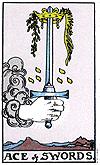

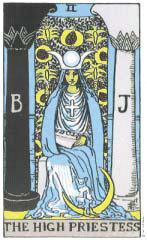




ARIEs March 21 - April 19
This month the cards are indicating a time of stress over love and relationships. you seem to be feeling rather disappointed with a certain situation. There will be some fabulous changes with your working pattern and a much awaited promotion or increase in finances. Take care of your health as you seem to be stressing yourself out. you feel that you want change your life drastically.

TAuRus April 20 - May 20
you will have a tendency to be a little blunt this month, so it would be a great idea to try and take a deep breath before you deal with people at work and/or officials. The cards are advising you to have a dental check up and also look after your stress levels. Meditation and deep breathing exercises are recommended. Relationships will need your tender love and attention this month.
GEmINI May 21 - June 20
This is a month for you to look at your work and health area. you need to decide on what you want to do as you seem to be bored with your normal routine. you have been thinking of moving on, but your actions are not in focus. look at doing some yoga for your body, as you also seem to be suffering from aches and pains. There is a feeling of wanting to travel more, so book a short journey to explore nature and walk more.
CANCER June 21 - July 20
This month the cards are showing that you will be looking at investments. look at every detail and take your time. The second part of october looks packed with several trips and associations with people who will be instrumental in your future growth. There may be some talk about moving this month, as you need a change. Take time out to spend time with your close friends and family.
LEO July 21 - Aug 22
The cards are indicating a time when you will be finding your married life stressful and difficult to handle. you need to sort things out with each other as there seems to be distance between you. look at your working hours. A short break away will help the situation. The health of elderly members of the family may be a concern. If you have children, there will be some good news with exams and awards.
VIRGO Aug 23 - sep 22
This month is filled with celebrations and parties. Take some time out as you have really been overdoing the social scene. A new member of the family, either by marriage or birth, may be a bit challenging. The cards are showing a time of making new contacts and friends. This is a time for a lot of new energy to flow through your life.

predictions for OCTOBER 2013
By NANCy JADE ALThEA www.cosmick-aura.com
LIBRA sep 23 - oct 22
you will be travelling around a few countries, visiting relatives and friends. older librans may be thinking of retiring in another country. There will be some news about a new baby or marriage which you will be attending. There will be an interested party who would like to buy your property. look after your eyes.

sCORpIO oct 23 - nov 21
you seem to be feeling exhausted and tired this month. you need to relax and take more time out for your own healing. Take proper rest. Matters will be sorted out and you will be back to feeling good again. you may be asked to speak at a meeting or conference, and you will do exceptionally well so do not get stressed.
sAGITTARIus
nov 22 - dec 21
This month will be full of high expectations and you will be buzzing around with ideas to take forward. your partner may not be as supportive as you will be spending more time away from home. you will be feeling enthusiastic and very fired up. Sit down and put your plans on paper and think them through. There are some amazing results if you just focus on what you want to achieve.
CApRICORN dec 22 - Jan 19
The cards are showing that you will be trying to get all your matters sorted out. you will be moving in to a new home or office where the energy will be very positive. There is a definite feeling of new beginnings. love will be a lot more balanced as you will be more appreciated and feeling good about yourself. Financially things will be improving too.
AquARIus Jan 20 - feb 18
you will be extremely busy with work and matters relating to paperwork. you need to make sure that everything is filed on time and that nothing is left undone at work. There is time for leisure as you will be either returning from a break or planning one. you will be very interested in planting new flowers and shrubs in your garden. Being with nature is very important for you this month.
pIsCEs feb 19 - March 20
you will be feeling a bit stressed out this month and are advised to take deep breaths and relax. one of your family members will be feeling unwell, but it is nothing serious. It’s time to take up some new sporting activities to get yourself out in the fresh air and move your body. you will be looking at changing your diet too.
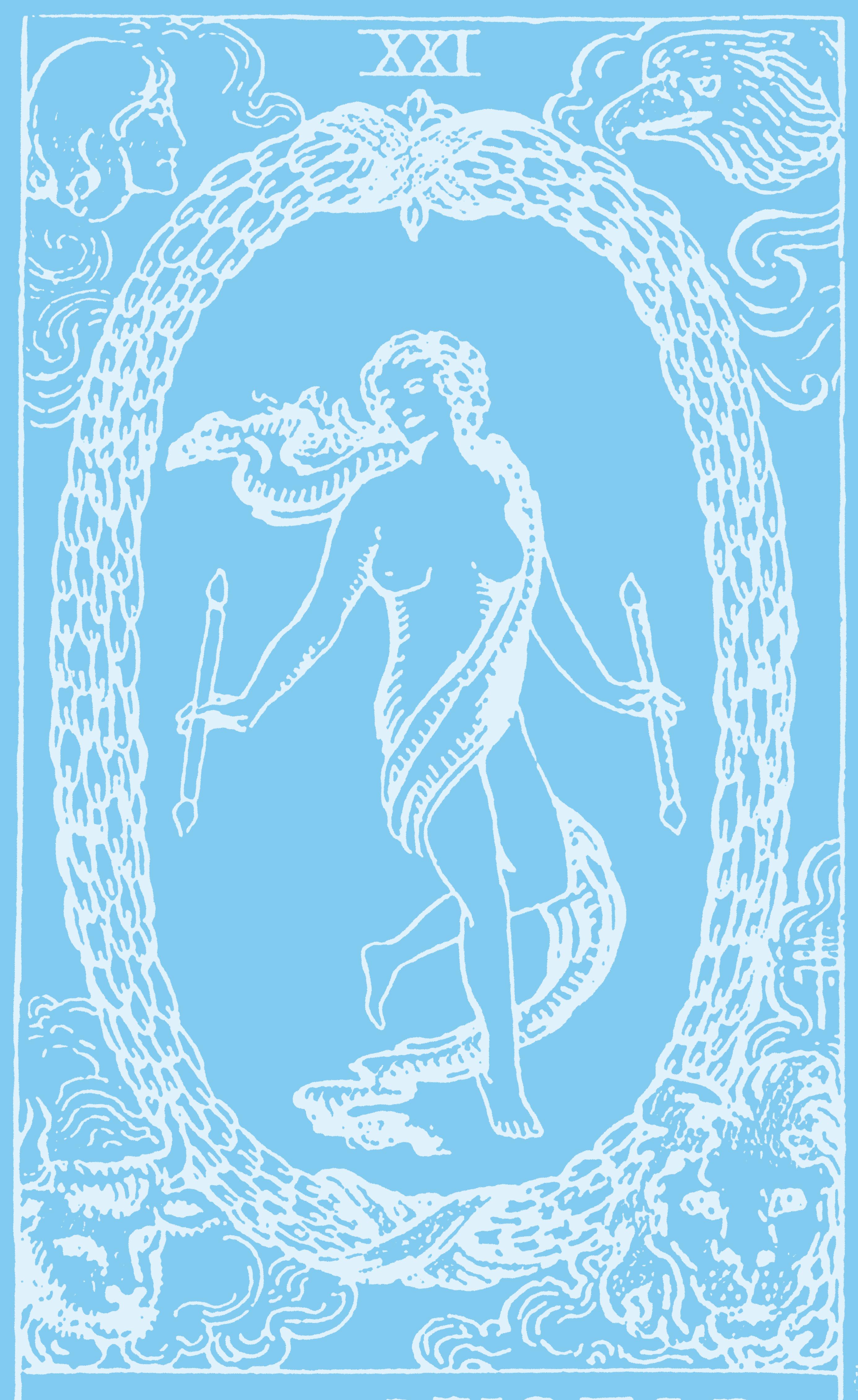
STARS FORETELL
CINE TALK
TAuT, TENsE, TACTILE AND TERRI
J O h N dAy
STARRINg: Naseeruddin Shah, Randeep Hooda, Shernaz patel, Elena Kazan
DIRECTOR: Ahishor Solomon
HHHHH
viewing John Day has the thrill of discovering an unexpected little gem. It doesn’t matter where writer-director Ahishor Solomon got the raw material for this gripping cat-andmouse tale. What counts is the quotient of curiosity and suspense simulated by the script. And there, John Day ranks very high.
Not for a while have we seen a film so swathed in anxiety, so audaciously draped in despair, and yet it engages our senses without miring the plot in morbidity.
The story is not for the squeamish. The two main characters are constantly haunted by their irrevocably tragic parts.
Naseeruddin Shah and Randeep Hooda, real-life guru and pupil, play people who know no happiness. Incidents from their
past continue to shadow and chase their present. There is scarcely a moment in the plot when John (Shah) and Gautam (Hooda) are happy except when they are with their beloved ‘other’.
But Shernaz patel, who plays Naseer’s wife and the very beautiful foreigner Elena Kazan who plays Randeep girl, are troubled by their own ghosts.
John Day is a restless edgy drama of the doomed and the damned. Randeep has played a fugitive shadowed by his own past before. But this is certainly his most layered character, which he performs with the kind of gravelly gusto that allows us to get only as close to the sullen character as he wants us. Towards the end-game when the momentum gets frenzied beyond recuperation, Randeep’s character’s softer side emerges.

He has a brilliantly written monologue with a comatose character where we get to know how much this brutal man loves his woman. yet he can die for money and for love. It’s a dichotomous character torn between self-abnegation and vendetta.
In a way Randeep character plays a
mirror-image of Naseer’s banker gone amok. India’s most vaunted actor now plays a wizened common man pushed to a corner by the monstrous corruption in out socio-political system.
In John Day the terror that Naseer’s character battles is far more personal, moving and compelling.
It is very difficult to speak out openly about the characters and their motivations without giving away the plot. With John Day you become one with the character’s battles, without getting judgemental over their actions.
Some of the things that the characters do are unmistakably brutal in a cold world with no comic relief, at least none where you laugh out loud at the ironies of life.
John Day brings the indomitable Naseeruddin and the intriguing Randeep together in a taut cat-and-mouse chase that stays a step ahead of the audience until the shattering end-game.
But other actors are equally at home in this inky kingdom of greed and gluttony. Vipin Sharma and Makrand despande are
sTILTED pERfORmANCEs IN fORGETTABLE fLICK
Shuddh dESI ROMANCE
STARRINg: Rishi Kapoor, parineeti chopra, Sushant Singh Rajput, Vaani Kapoor
DIRECTOR: Maneesh Sharma
H HHH
while watching light-hearted love stories also known as ‘rom-coms’, two reactions come to mind: ‘What next?’ and ‘Who cares?’
This annoying film, masquerading as a modern-day parable on ‘What young people Want’, definitely falls into the ‘Who cares?’ category.
The three main characters are so confused about life, sex, love and commitment (in that order) that you wonder why a film was scripted about them and their annoying lives in the first place. The ‘hero’, if he can be called that, is not only commitment-phobic but impervious to any kind of gravity in life. don’t misunderstand. He takes himself very seriously. But it’s hard to take him seriously as he vacillates between two women, both equally absurd in their libertines’ apparel borrowed straight out of some stale Julia Roberts-Susan
Sarandon film which probably got shelved because the hero ran away with the cameraman.
Shuddh Desi Romance is so contaminated with candour, it doesn’t realise the difference between being sincerely searching and artificially scandalous.
Jaideep Sahni has written some remarkable films in the past, but sadly this ranks as his worst-written endeavour to date. The film has only three main characters, one of who is employed solely in slipping in and out of the two women’s lives.
Shuddh Desi Romance is not the kind of film that obtains or even seeks a decent resolution. The plot is happy to let the protagonist Raghu stew in his own orgasmic juices.

And he is plainly horny all the time. The over-zealous Sushant Singh Rajput as the hero doesn’t even try to hide his hard-on, wearing his libido like a badge of honour and flaunting his carnality in front of the two ladies. They, for reasons best known to them, seem to enjoy his company after an initial bout of demurral.
It is baffling how a protagonist as low-life and sleazy as Raghu can attract two attractive, feisty, free-willed women. or why they would encourage his
advances when they know he thinks only with his... well, to use a term Rishi Kapoor uses with such endearing picturesqueness... pappu in the pants.
Pappu in the pants has rollicking time. curiously the hero and his horniness are like two different entities in the film which simply celebrates, for want of a better term, low-life libidinousness. Raghu, as played by Sushant, comes across as a wimpy womaniser and nothing more than an irksome skirt-chaser.
The two women are more interesting, as always. Especially parineeti chopra whose dumbly defiant, smoking, swearing, character Gayatri acquires some stability through her fearless embrace of the camera space. No matter how frustratingly ill-conceived Gayatri’s rebellious attitude may be, parineeti owns up to the character’s weaknesses like a man.
debutant Vaani Kapoor plays her very awkwardly-written character with a mysterious smile that suggests it knows something that we don’t. Not that we care.
very engaging in their supporting parts. But the film’s third hero is Sandeep chowta’s background score, creating a world of emotions beyond spoken words for Naseer and Randeep.
This is a world where there is no escape from sorrow and grief. Enemies are clobbered and butchered mercilessly, simply because life is as randomly brutal as we make it for ourselves. And cinema such as this reminds us that moral values of good, evil, justice and comeuppance mean nothing to those who have nothing to lose.
For a film about losers, John Day is a paradoxically profitable movieviewing experience.
SuBhASh K. JhA
Most of the principal actors barring Rishi Kapoor give overrehearsed performances, projected as laboured casualness.
Rishi Kapoor as the wedding caterer is the exception, sinking his teeth into his role. The selfdefeating numbing verbosity of the three main characters in this lust-triangle do nothing but speak about their pathetic self-limiting world. Soon we feel like reluctant eavesdroppers in an ill-managed ménage a trois
Flat and phoney, the self-conscious realism of small-time genderequations in Shuddh Desi Romance leaves us untouched, unamused and cold. live-in relationships never felt less inviting.
SuBhASh K. JhA
44 OCTOBER 2013 www.indianlink.com.au
ENTERTAINmENT


OCTOBER 2013 45 INDIAN LINK
ThE BuZZ
John prefers sense over nonsense
Hunky actor John Abraham has been propagating offbeat and ‘sensible’ films in a space full of masala entertainment, because he believes that Bollywood currently lacks ‘sensible’ stories to tell.

“We lack stories. We have no stories to tell. We put five songs with five comedy scenes and say it’s done,” lamented John in an interview. And that’s why the 40-year-old actor enjoys the role of a film producer. He’s already tasted success with eclectic movies like the entertaining Vicky Donor and the engaging Madras Cafe
“I love the role of a producer because I make the kind of films which I want to make,” he said. “I make sensible films. I think Vicky Donor and Madras Cafe are examples enough about the cinema which I want to propagate”.

ROAD TO AN OsCAR?
debut feature filmmaker Gyan correa’s Gujarati film The Good Road has been chosen to represent India in the best foreign film category at the next Academy Awards. It is said to be the first Gujarati film to have made it to this prestigious event to be held in March 2014.
“It was a unanimous decision to select The Good Road, which is a movie produced by the National Film development corporation (NFdc),” said renowned filmmaker Goutam Ghose, who headed the selection committee appointed by the Film Federation of India (FFI).
A haunting tragic travel drama, the movie is the story of three individuals on a highway, and was widely shot in the Kutch district in Gujarat. It had clinched the National Award for Best Feature Film (Gujarati) earlier this year. It features actors like Sonali Kulkarni and Ajay Gehi.
Ghose says it reflects an India that our movies usually don’t showcase.
“We chose this wonderful Gujarati film The Good Road. We were surprised by the film... The Lunchbox is very good too,” said Ghose. “I loved the performances of Irrfan and Nawazuddin Siddiqui. But The Good Road got our vote. It’s a lostand-found story set in the Kutch area. It reflects on an India not seen in our films. The film explores an entirely new cinematic space,” he added, mentioning that a long five-hour discussion followed before The Good Road was chosen by the 16-member committee.

The movie left behind 21 other contenders, including strong films like The Lunchbox, Bhaag Milkha Bhaag, English Vinglish, Vishwaroopam, Malayalam film Celluloid and Bengali film Shabdo
Ghose also revealed that the FFI has sent a request to the Academy Awards asking that India should be allowed to send several oscar entries per year, instead of just one “as we are such a large cinema-making country”.
“So many diverse kind of films are being made in India. We make 1,500 films. The Tamil film industry is itself bigger than Korean cinema. Why should we send only one film to the oscars? We cannot dance only to their tune,” he added.
So far in the history of Indian cinema, only three Bollywood films, including Mehboob Khan’s Mother India (1957), Mira Nair’s Salaam Bombay (1988) and Ashutosh Gowariker’s Lagaan (2001), have made it to the nomination stage of the oscar.
let’s hope the end of the road is an oscar for this unique film.
But the ever-practical actor who has been in the film industry for a decade, is open to the idea of producing a masala film. “I’d love to produce a big masala film, and I will make sure that you are genuinely entertained by it,” he said. As an actor, he admits it has been “important to be a part of commercial films and to entertain people. At the end of the day, people want to laugh and enjoy. But if I am doing a Race 2, Housefull 2, Dostana 2 or a Welcome Back, it is important that I make sure that a Madras Cafe is also made,” said John. “John Abraham is known to do a mix of films. If I do a New York, I will do a Kabul Express as well. It is important to balance it out,” he added.
And of course, it’s fun to be a part of true blue Bollywood entertainers. “I don’t regret it. They are fun. I am not condescending towards them, but it is good to have a balance of both. I love slapstick comedy. The best case in point is Chennai Express. I am sure I will enjoy it. But I feel it is interesting to make a Madras Cafe,” he said.
Irrespective of the genre, the story line is prime. “I feel that only a good story line can get you respect. commercial is a by-product, you will make money... but a good story line will get you respect,” said John, who is planning a film on motorcycling next and has already begun scripting one. Himself a bike enthusiast, John is also buying a spot in the Moto 2 format of motorcycle road racing championship, one of the classes of racing organised under the Road Racing World championship Grand prix.
After the success of Madras Cafe, John is now producing Hamara Bajaj, although he is quick to clarify that the name of the movie is only a working title. The poor
guy is keen to avoid litigations, especially from motorbike companies. He did say however, that those who loved his debut production Vicky Donor, will also enjoy the new film which will go on the floors soon. The film will star Ayushmann Khurrana and will be directed by Shoojit Sircar once again.
Good luck John, with your latest venture of ‘sensible’ and non-litigious cinema.
Vivek admires Hrithik!
Actor Vivek oberoi is an obvious fan of co-star Hrithik Roshan after watching the hunky actor perform in Krrish 3, a soon to be released sci-fi flick. “Krrish 3 is one of Hrithik Roshan’s career’s best performance,” Vivek said in an interview. ”To play three characters: Krishna, Krrish and Rohit and to play them so differently in one film... especially there are scenes where they (Hrithik’s characters in the film) are talking to each other and the performances are so beautifully done that they look like different people... It is an outstanding performance,” added Vivek.
directed by Rakesh Roshan, Krrish 3 is the third film in the franchise that began with Koi Mil Gaya in 2003. It also features priyanka chopra and Kangana Ranaut.
Vivek even recalled an incident that moved him to tears after watching Hrithik’s performance in one of the scenes from the movie. “When I was dubbing for the film, there was a very emotional scene of Rohit, being played by Hrithik in the film and his performance and emotion in that scene was so deep, so beautiful that it touched my heart deeply. I was choked in that moment,” recalled the 37-year-old actor.
“I couldn’t speak, there were tears in my
46 OCTOBER 2013 www.indianlink.com.au
Up-TO-dATe news On whAT’s hOT And hAppening in B ENTERTAINmENT
VIDYA BALAN
CApTION CONTEsT
eyes. I remember stopping the dubbing (in between), came out and called up Hrithik and said, ‘I love you man, what a performance,’” he added.
Meanwhile, Vivek oberoi is pleased with his villain avatar called Kaal in Krrish 3. “Bad characters have always attracted every actor and it is so enjoyable to play a negative shade or character,” said the actor, who earlier played negative in films like Shootout at Lokhandwala. “I am very excited because there is an aristocratic aura around this character. This character is the prince of darkness. He is a super villain who is the king of his own world,” he added. Recently, Vivek’s look in the film was unveiled and he was happy with the response he has received for it. His hard work of over three months has paid off.

So let’s wait for early November to see if Krrish conquers or crashes at the box office!

Real to reel Maa-Beti duos
India celebrated daughter day on September 22, inspiring us to look at
the powerhouse mother-daughter relationships in Bollywood. Maa-beti duos like Kajol-Tanuja and Sharmila Tagore-Soha Ali Khan have not just struck the right chemistry and friendship off the arclights, their bonding has translated on screen too, bringing their real life magic alive on reel via films. Take Tanuja-Kajol.
They first teamed up for the 1992 film Bekhudi and were last seen on the screen in the 2010 movie Toonpur Ka Superhero Kajol had once admitted that the idea of working with her mother scared her because of the latter’s perfectionist attitude. But when the movie released, she did admit to gaining the confidence to face her mother for the camera.
Soha Ali Khan had always maintained that she wanted to be a part of her mother’s glorious filmography. She finally got a chance with Sangeeta datta’s 2009 film Life Goes On o ff the cameras, they share a mother-daughter bond like any other with Soha eyeing her mother’s jewellery pieces, but Sharmila always lends her expertise, be it in acting

whO wORE IT BETTER?
or in delivering Bengali dialogues in movies, to her girl.
Hema Malini and Esha deol got together for many films like Cash, Na Tum Jaano Na Hum, Kuchh Toh Hai, Chura Liya Hai Tumne, Darling and One Two Three, which failed miserably at the box office. Esha floundered in Bollywood, but devoted mum Hema Malini tried every attempt to jumpstart her daughter’s flagging career. She even directed Me O Kkhuda, which unfortunately also bombed.
Some of Bollywood’s other popular mother-daughter duos include Kapadia and her daughters Twinkle Khanna and Rinke, Moon Moon Sen with her daughters Raima and Riyaa Sen, and lilette dubey with her daughter Ira dubey.
In the ad world too, actress Neetu Singh has posed with her girl Riddhima Kapoor. Sonakshi Sinha too will reportedly team up with her elegant mother poonam for an advertisement.
So it’s women power to Bollywood’s beauties and all the very best to them!
Vidya supports child education
She’s among an increasing breed of actors who are taking social issues to heart and making a hands-on attempt at being more than just the face of a cause.
Vidya Balan visited Thanapur village in Uttar pradesh as part of Nihar Naturals
Shanti Amla’s Chotte Kadam Pragati Ki Aur, an initiative to empower women to support children’s education in India.
Vidya launched a mobile phone-based learning system that seeks to make the learning process interesting for children, and will also help them learn English words. She even used Bollywood songs to teach children of the village, also situated in the same district. “When you use a song to tell them something... you are hoping it stays with them. It has strong impact on them,” said Vidya.
Sonam Kapoor or Dita Von Teese in Elie Saab?


Share your views with us on our Facebook page
Vidya also revealed that her next release will be Shaadi Ke Side Effects which will l come out on Valentine’s day in 2014. The film is a romantic comedy also starring Farhan Akhtar. Keep up the good work Vidya!
what’s Aish Bachchan saying that’s making hugh Jackman laugh?

Send in your responses to win@indianlink.com.au and win a surprise prize
LAsT IssuE CApTION CONTEsT wINNING ENTRy
what’s the chitchat here between Rekha and Rani?
Rekha: I present to you the Rekha CopyCat award for this year, Rani. Rani (to herself): Eat your heart out, vidya Balan.

Priya Nadkarni Upper Mt Gravatt, QLD
Priya wins a ticket to new Hindi release Phata Poster Nikla Hero
OCTOBER 2013 47 INDIAN LINK
JohN ABrAhAm
VIVek oBeroI SohA ALI khAN
caller
Discovering
Phone calls from call centre operators have been the bane of my existence for some time now. They ring on my landline at the most inappropriate of times, like just before the school drop off or pick up, and invariably at mealtimes, interrupting my daily yell to get the TV turned off and hands washed.
A ringing phone is something that’s hard to resist and being techno-challenged, I can’t quite find the ‘ringer off’ button on my phone. If I do, it’s likely that I won’t remember how to turn it back on again. So to keep life simple, I just don’t try. This warped philosophy allows persistent call centre operators to try and talk to me about everything from solar panelling, new phone plans, cheap calls to India, sorting out my computer problems, and of course, invitations to free dinners and seminars.
I’ve tried everything from blocking my number to pretending I can’t hear them, to just not answering the phone after 5pm, but I sometimes have to bow to the inevitable and endure a frustrating conversation trying to convince them that what they’re offering is of no value, or interest to me whatsoever.

But recently, I inadvertently came across a new weapon. The phone rang as usual at 5:15pm on a Monday, while I was busy getting dinner organised downstairs. As the hands-free was upstairs, I asked my older son to answer it.
“Hello!” he bellowed into the phone, probably creating a sizeable crack in the caller’s eardrum. The phone was on its speaker, so I could hear the conversation.
“Is your mum home?” asked a male voice, somewhat testily.
“What?”
“Is – your – mum – home?”
“Vhott?” Even louder.
“Your MUM. Is your mum home?” asked the voice, practically yelling this time.
“Huh? Whaat?”

“YOUR MUM!”
“My mum? My mum?” As if he had any other!
“Yes, yes, your mum!”
“I can’t hear you, did you say my mum?”
being told off by his dad, who had inadvertently called the landline one day and had been treated to a few vociferous ‘What’s’. He had taken pains to explain the fundamentals of politeness, especially when communicating with unknown people over the phone, some of whom mum works with. Apparently some of that had indeed, made sense.
“Please can I speak to your
“How are you?” asked a suave voice.
“I’m okay, how are you?” asked my son, polite for once.
“What’s your name?”
“I’m Sid, what’s yours?”
Now this is still a hotly debated subject. Did they say ‘Matt’ or ‘Bert’? Whatever it was, my son burst out laughing hysterically, “Butt, Butt, his name is Butt!” he yelled joyously and his younger
I’m now thinking of enlisting the younger one to the task, particularly because he has his own charming brand of eccentricity that lies only within the comprehension of close family. He has ‘opposite’ days and ‘repeat’ days, among other strange and hilarious traits like wishing people ‘Happy Birthday’ when it’s the New Year, and vice versa. I can just imagine the conversations.
“Hello!”
avatar.
At this point I would take the phone from him, and if the caller is still on the line doubting their sanity, I would take at least a couple of minutes to actually listen to their selling spiel. They would need convincing that the world is, as they know it, a normal place. So that they could hang up and confidently move to the next caller… you, I hope!
48 OCTOBER 2013 www.indianlink.com.au
b Ac Kch
a new technique of avoiding conversations from call centre operators has been a delightful experience
“mum? Who?”
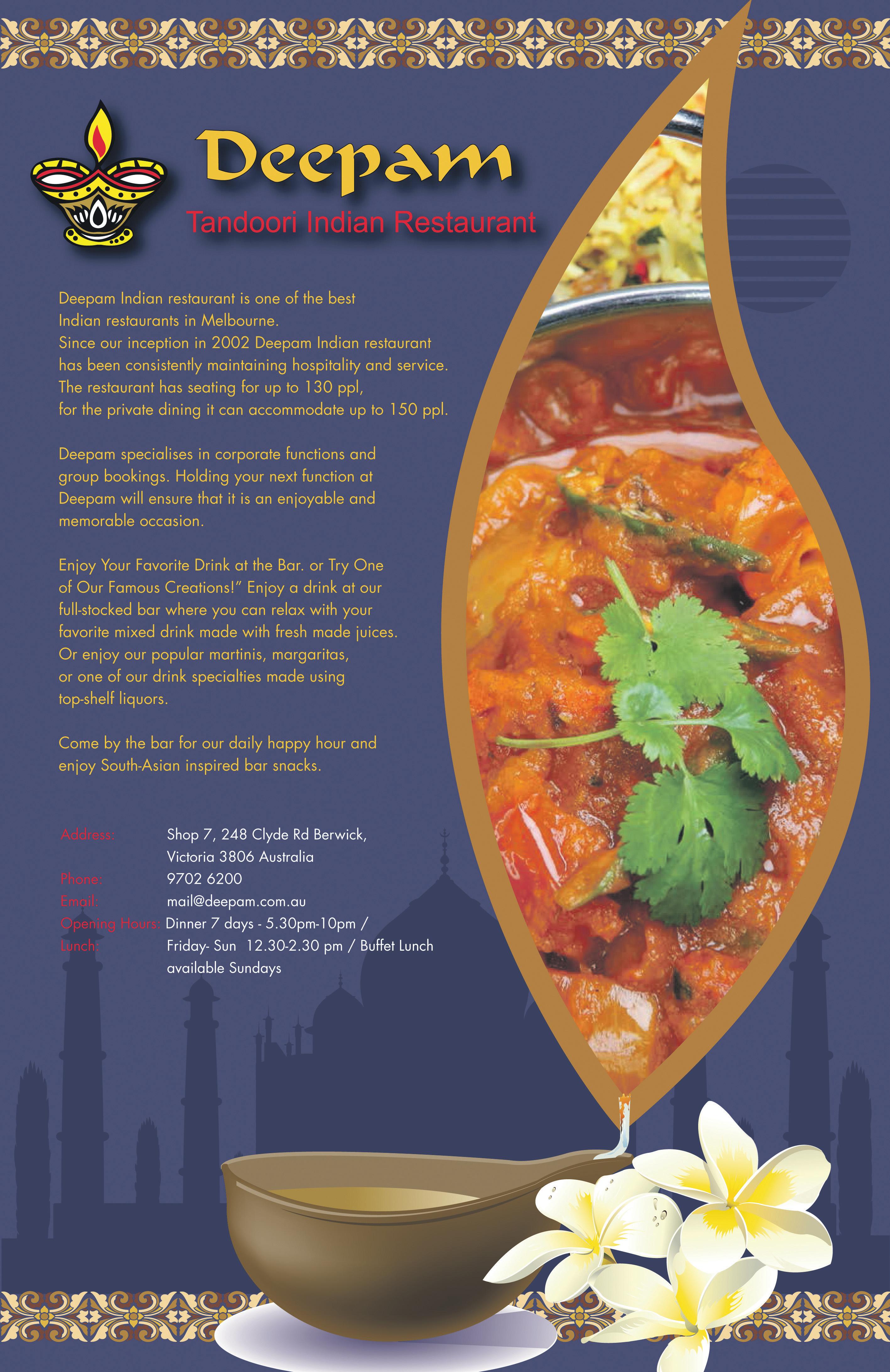
OCTOBER 2013 49 INDIAN LINK
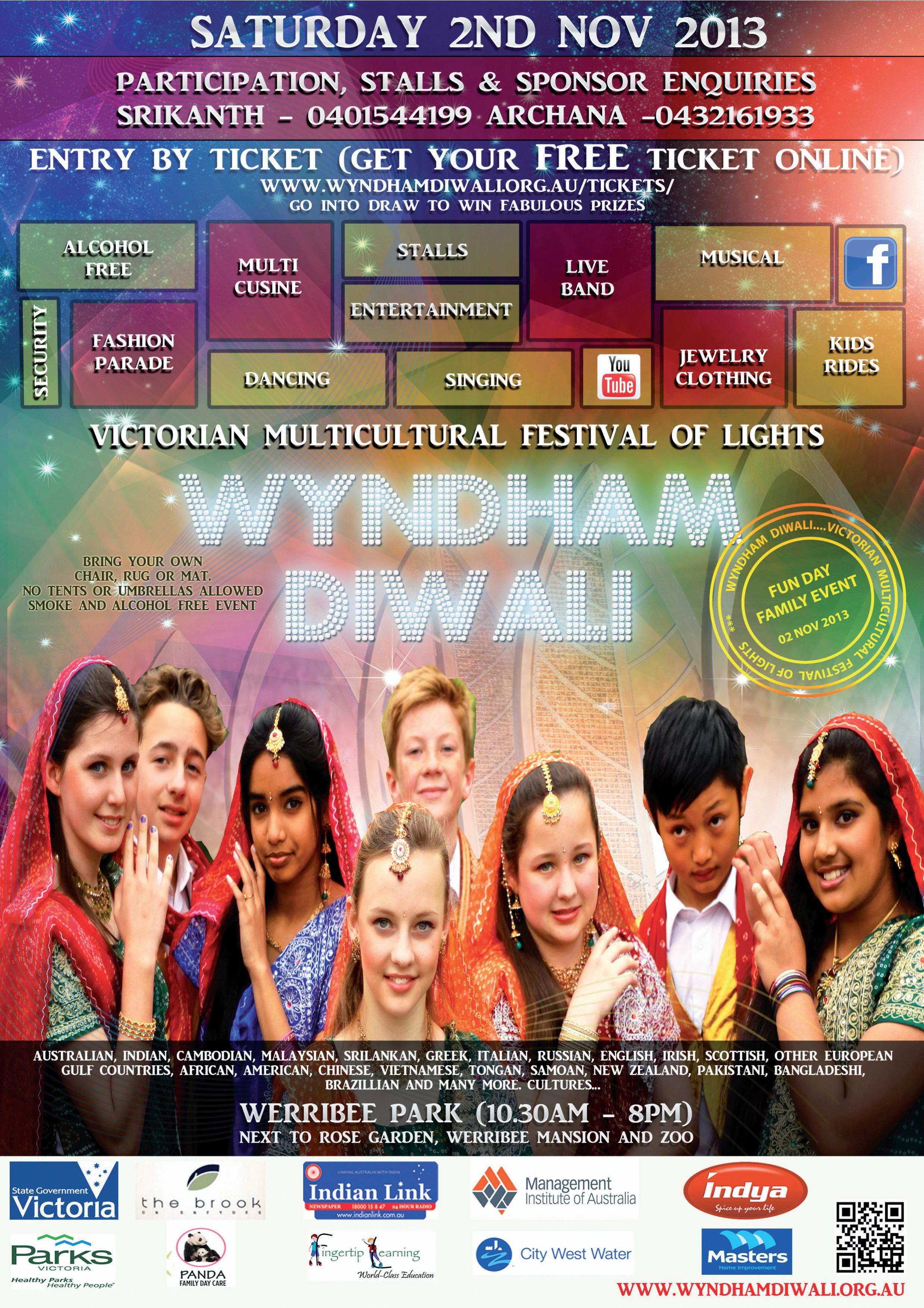
50 OCTOBER 2013 www.indianlink.com.au

OCTOBER 2013 51 INDIAN LINK




















































































 By LENA PEACOCK
By LENA PEACOCK






 Indian Link team (from left) Pawan Luthra, Rajni Anand Luthra, Nitika Sondhi, Lena Peacock, Antoinette Mullins, Danielle Cairis and Vivek Trivedi
Shaoquett Mosselmane with Rajni Anand Luthra and Pawan Luthra
Indian Link team (from left) Pawan Luthra, Rajni Anand Luthra, Nitika Sondhi, Lena Peacock, Antoinette Mullins, Danielle Cairis and Vivek Trivedi
Shaoquett Mosselmane with Rajni Anand Luthra and Pawan Luthra

























































































